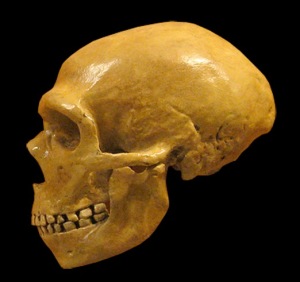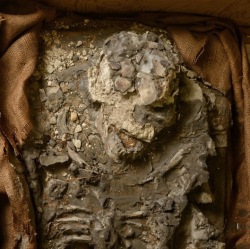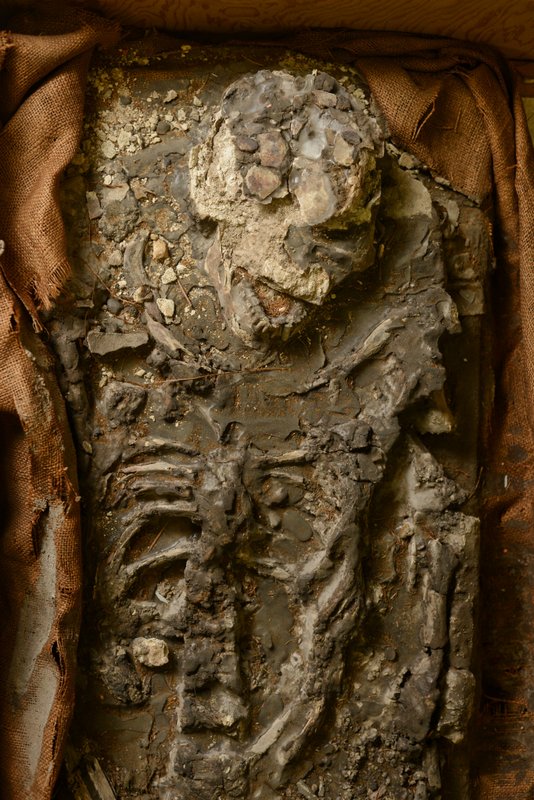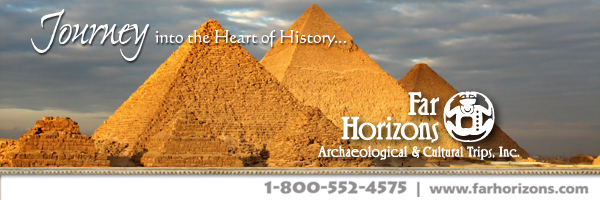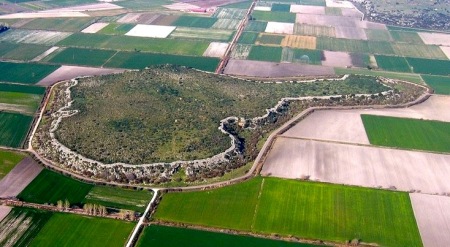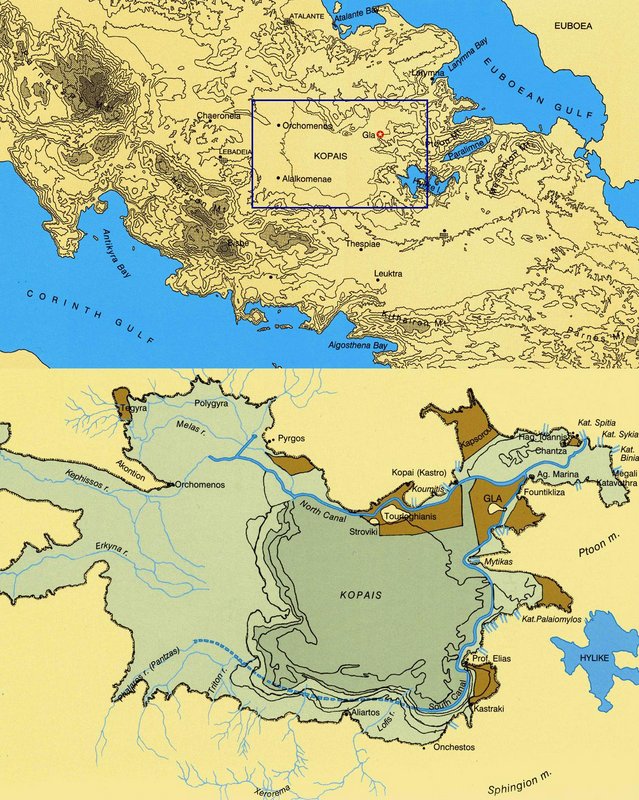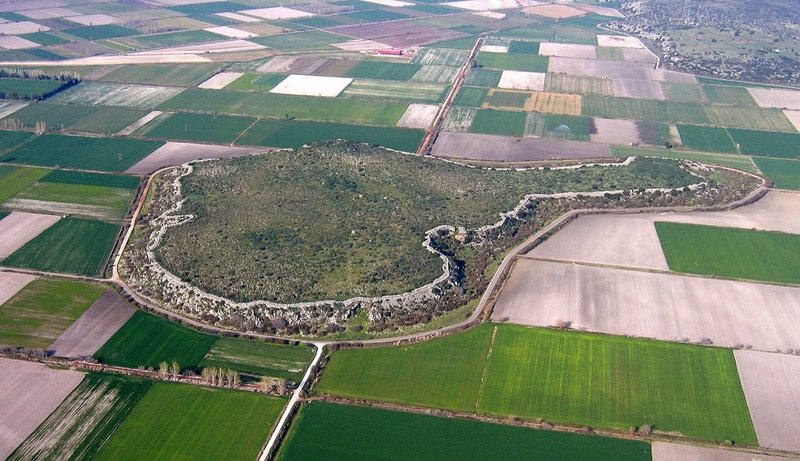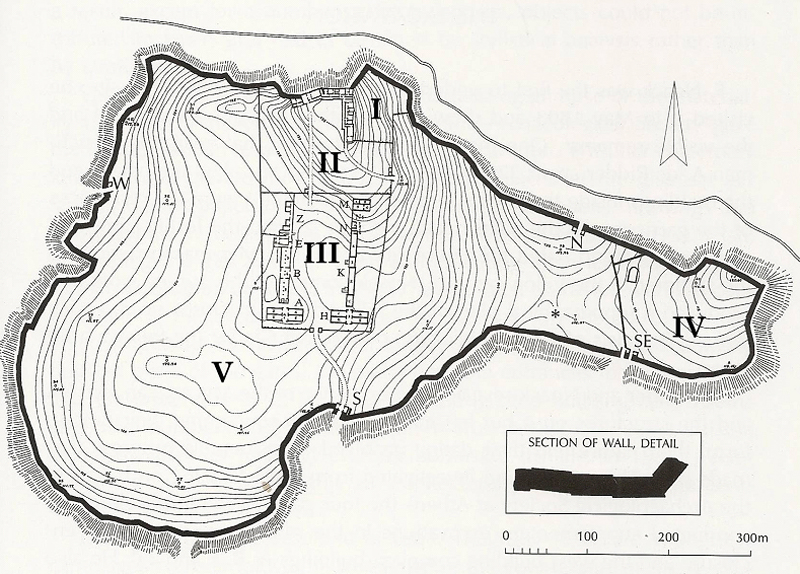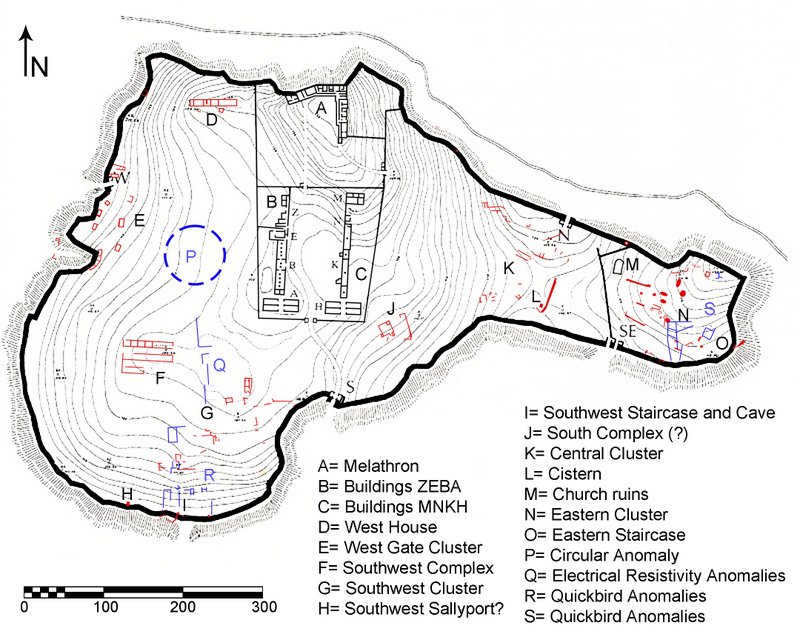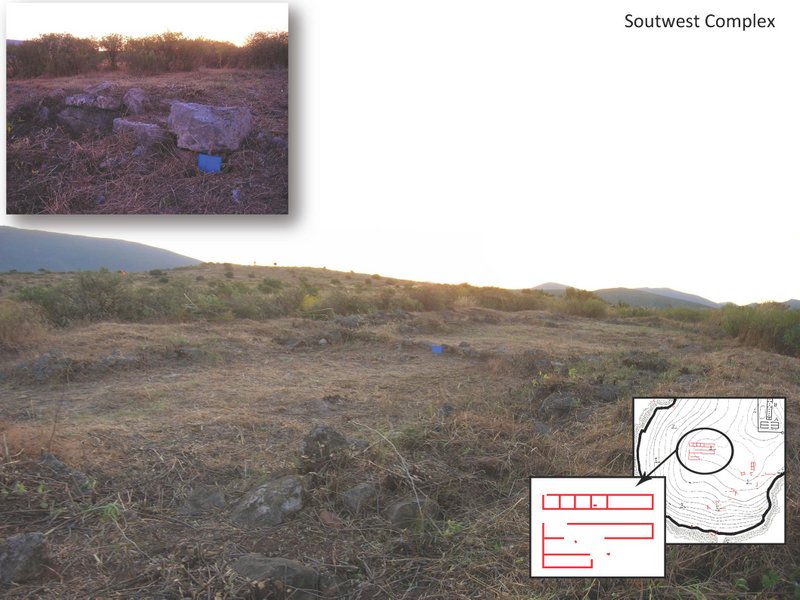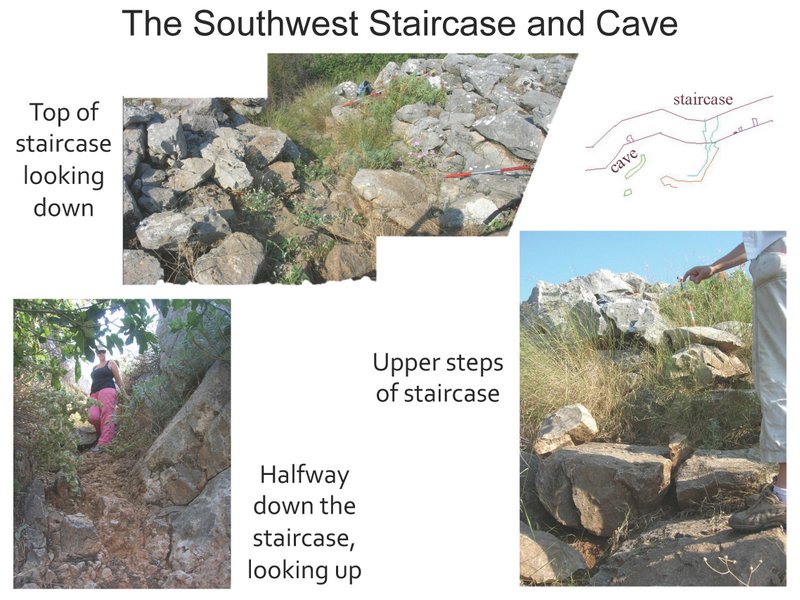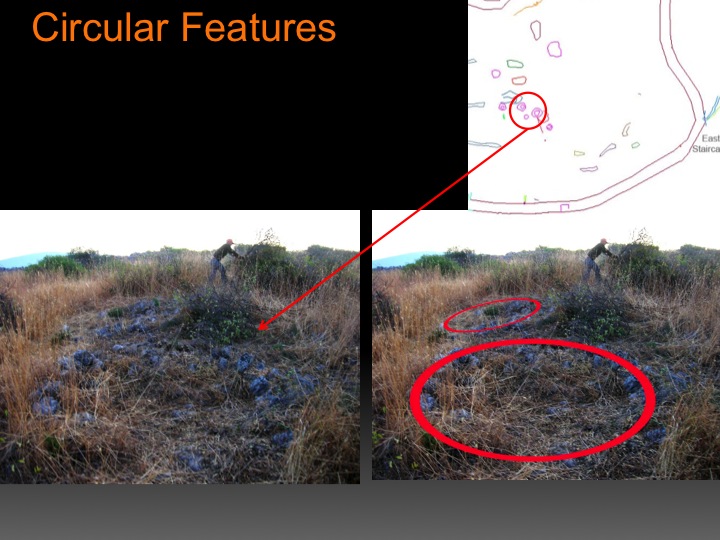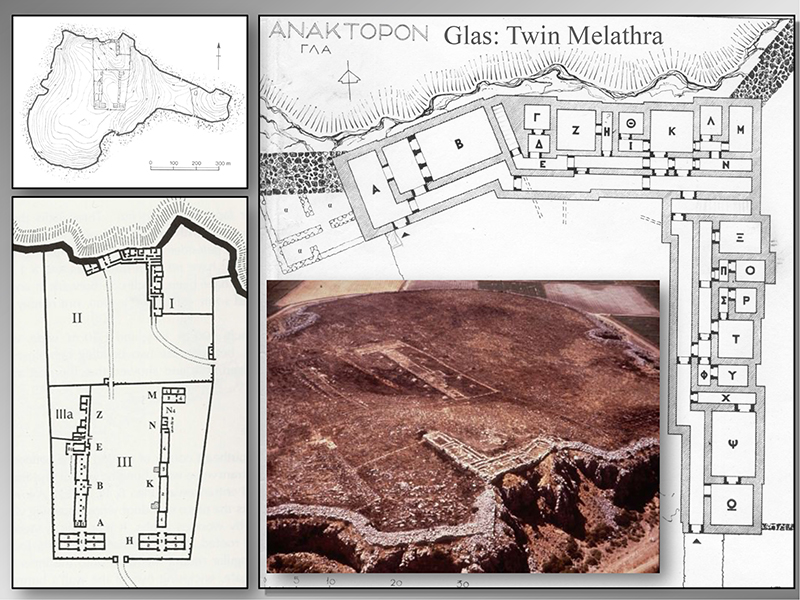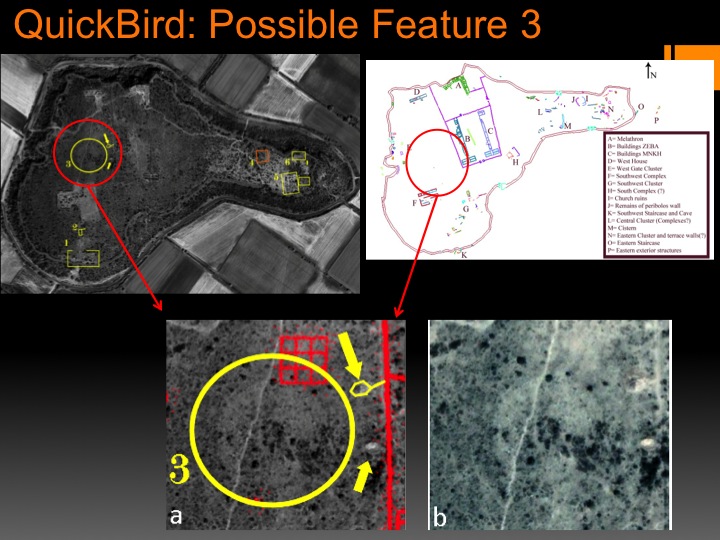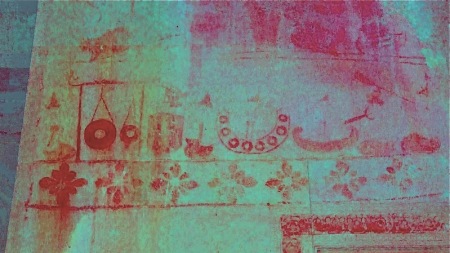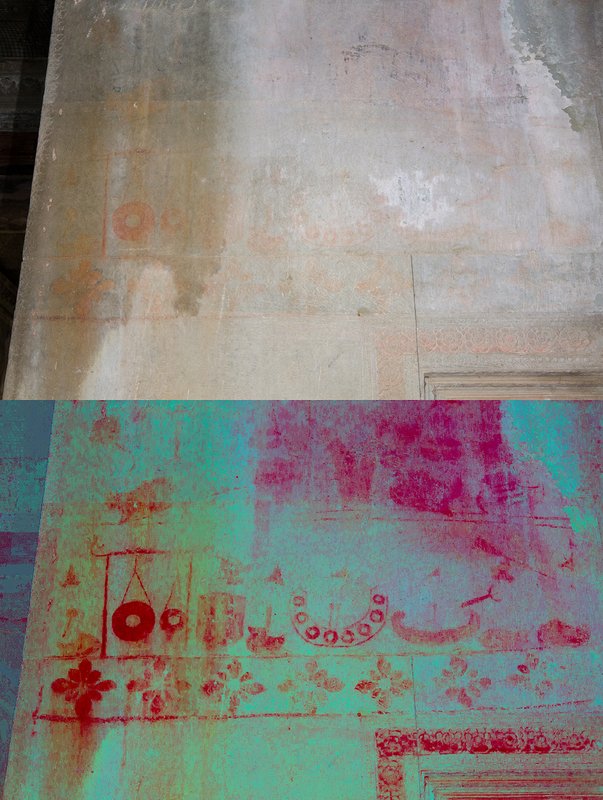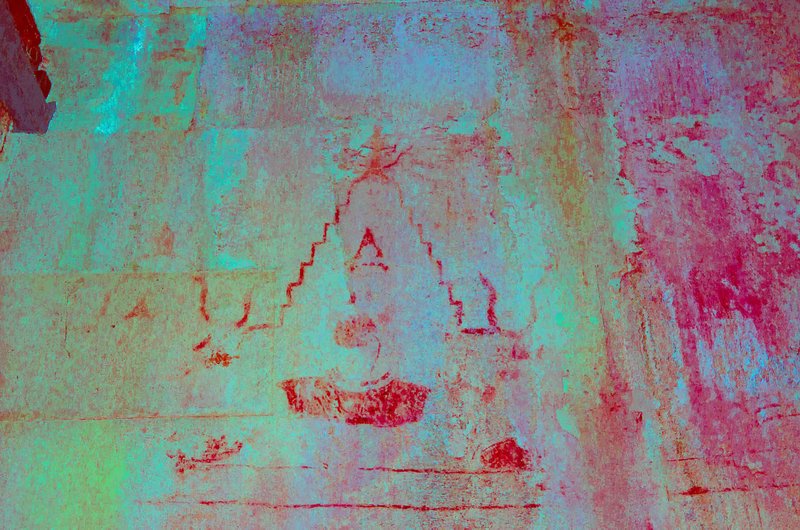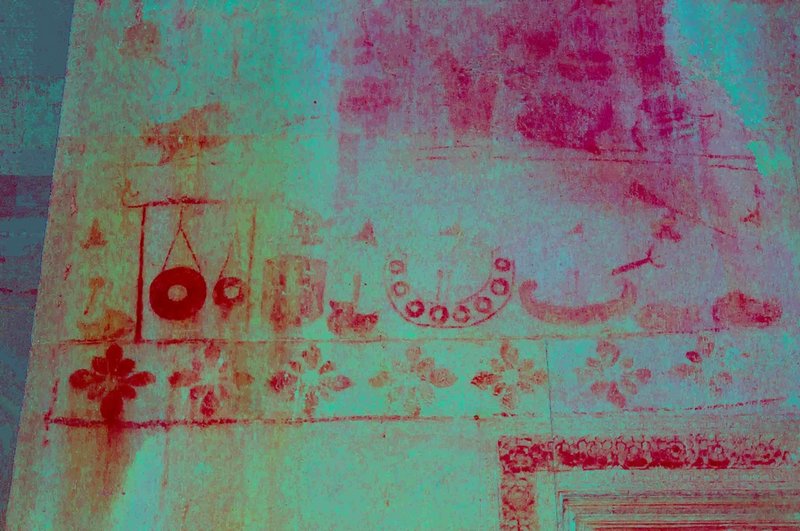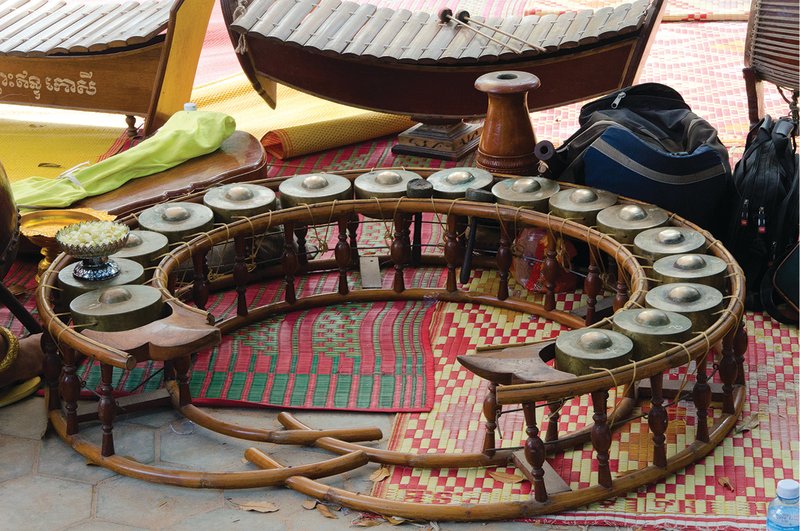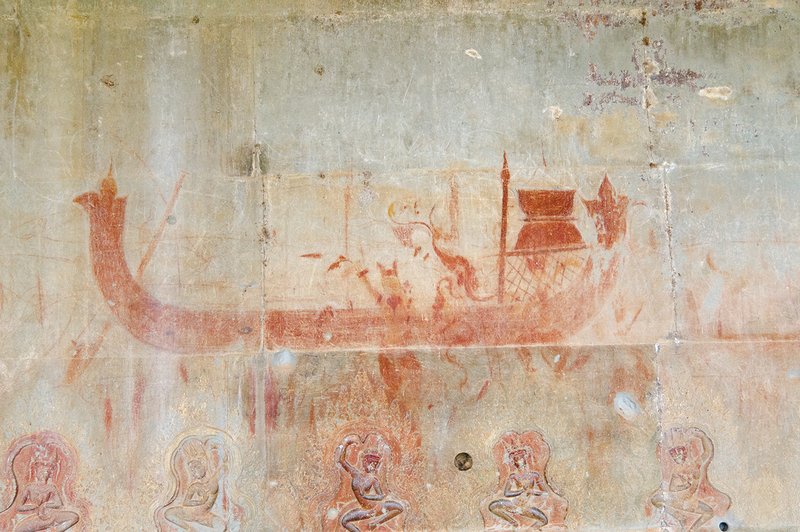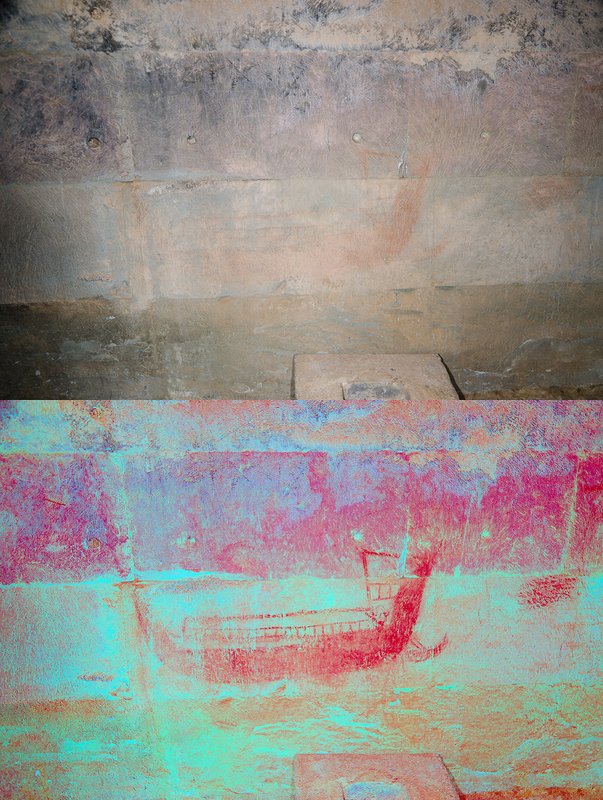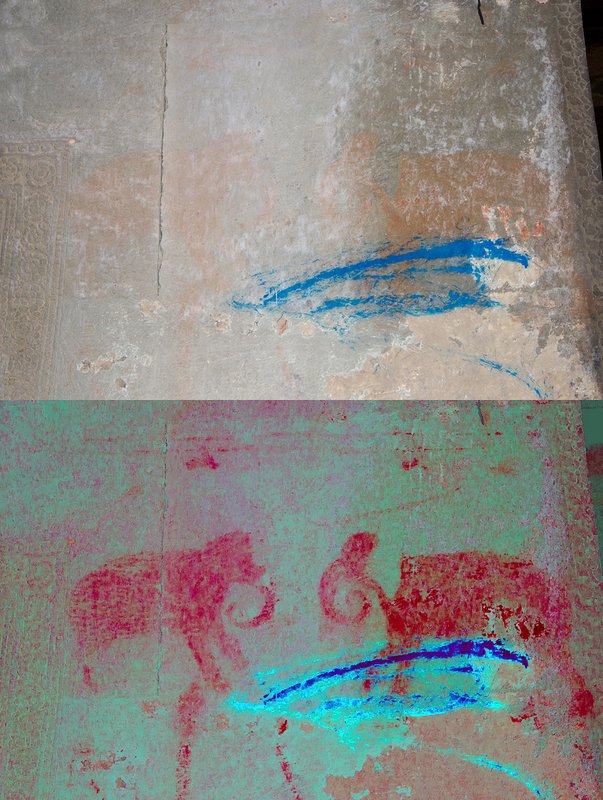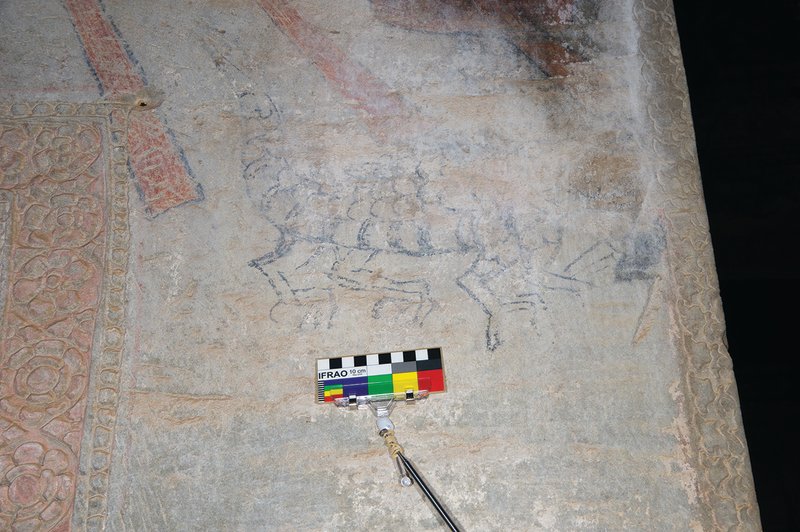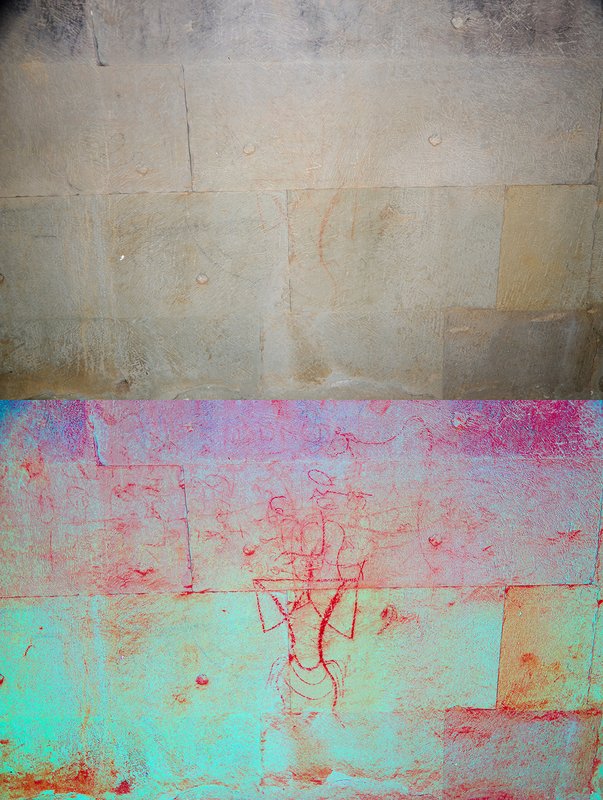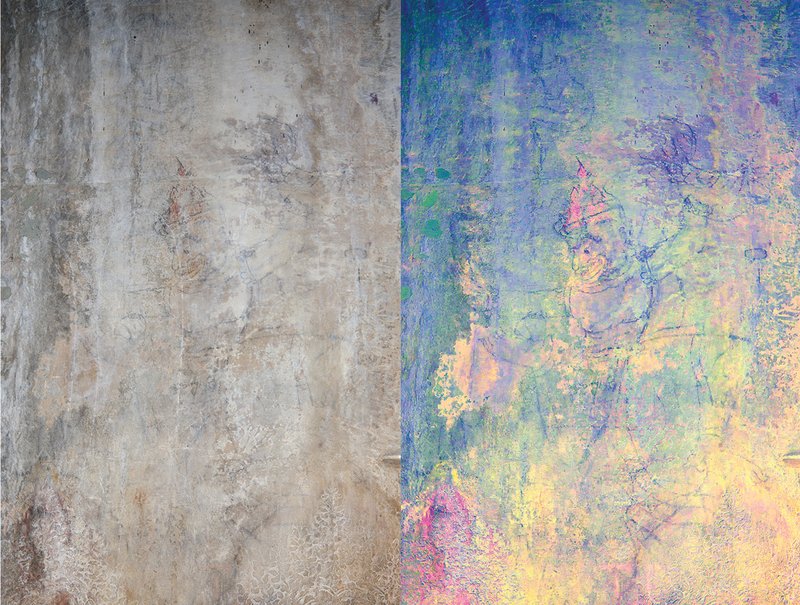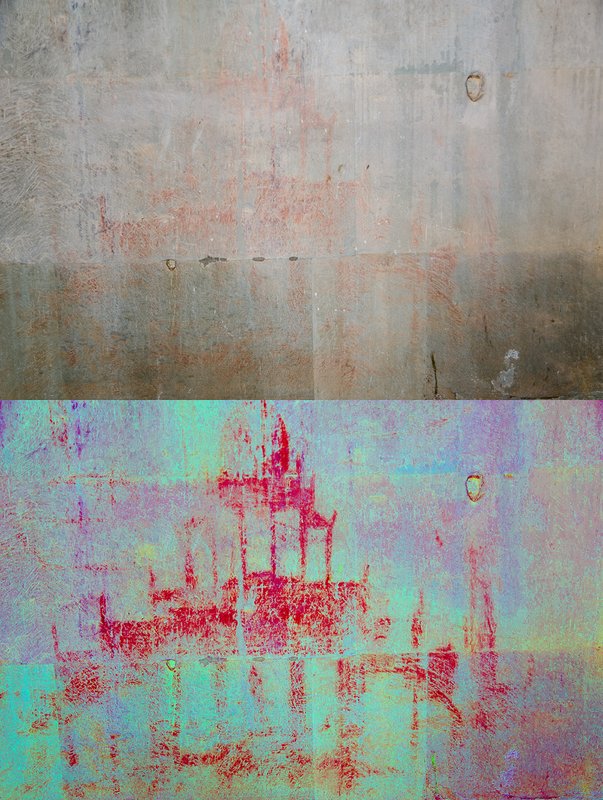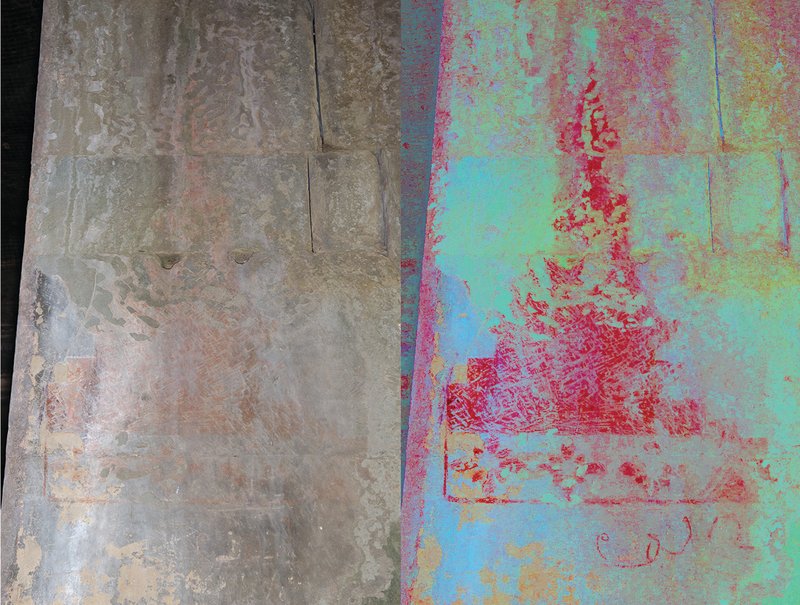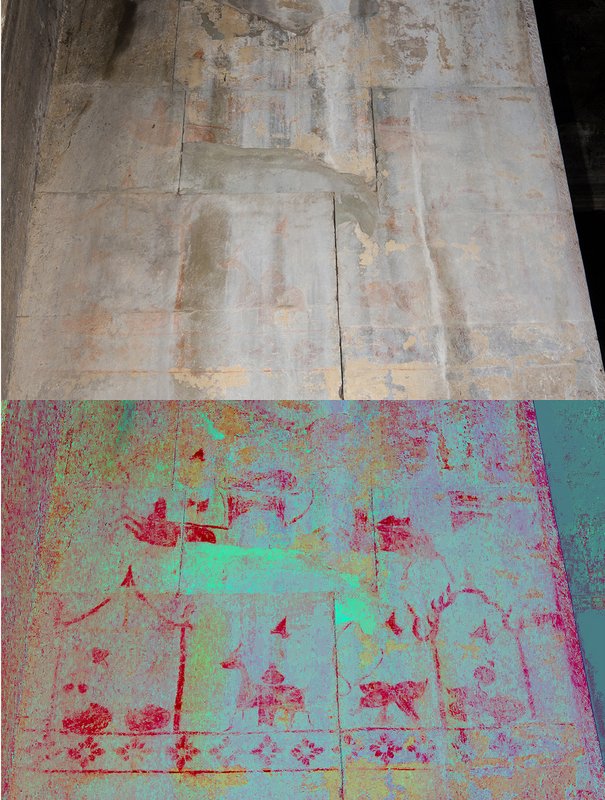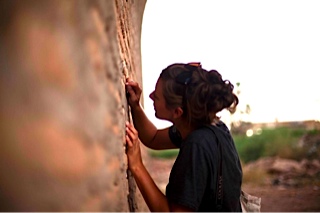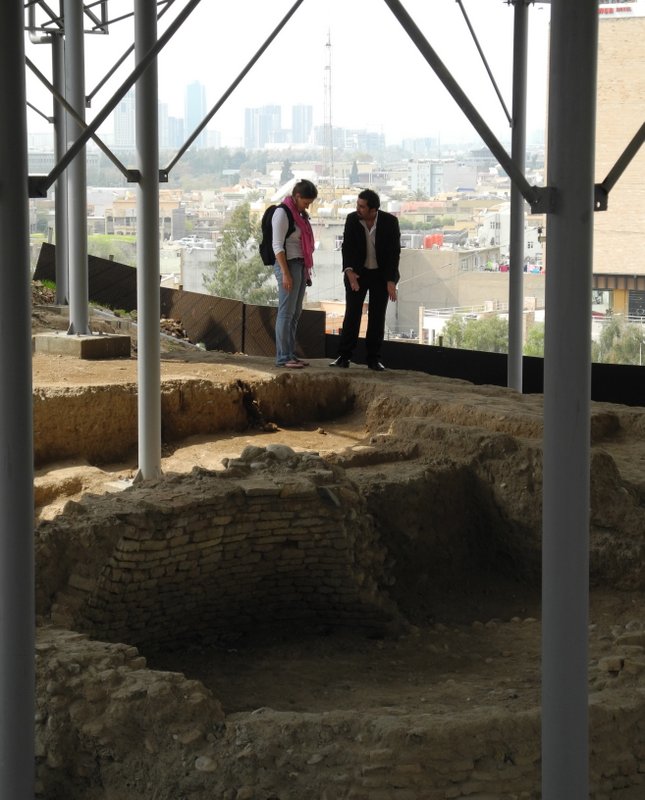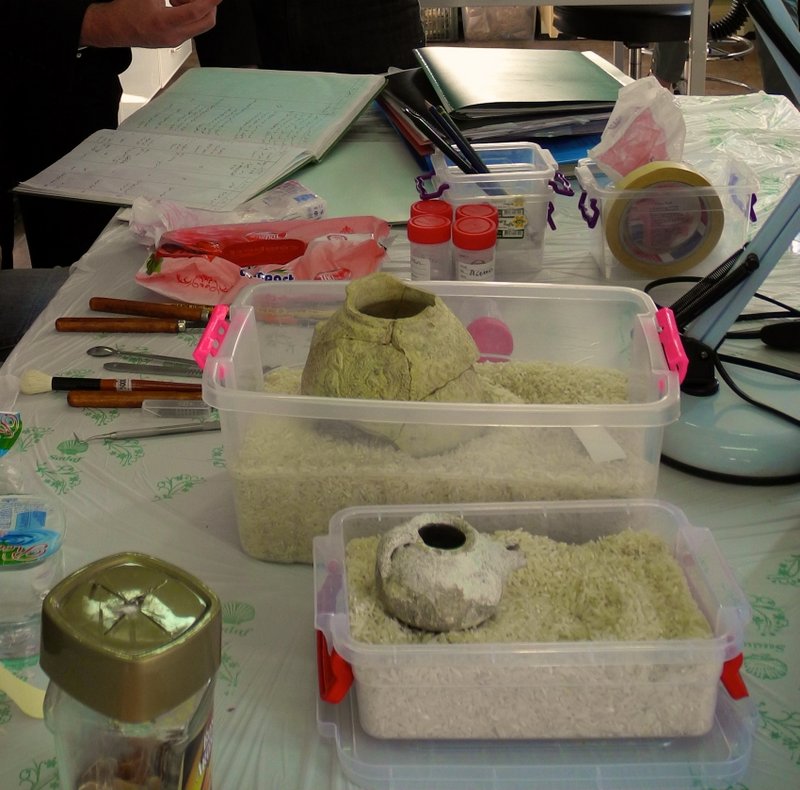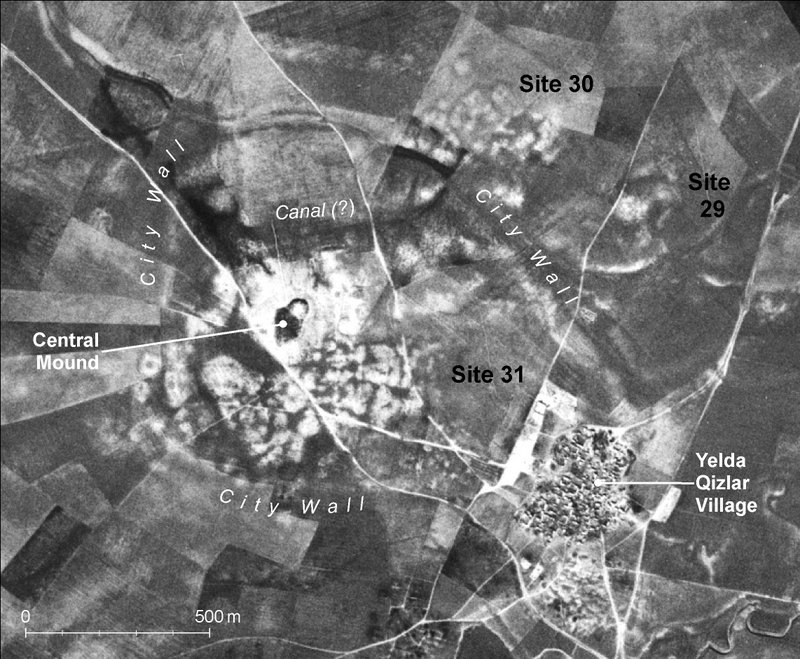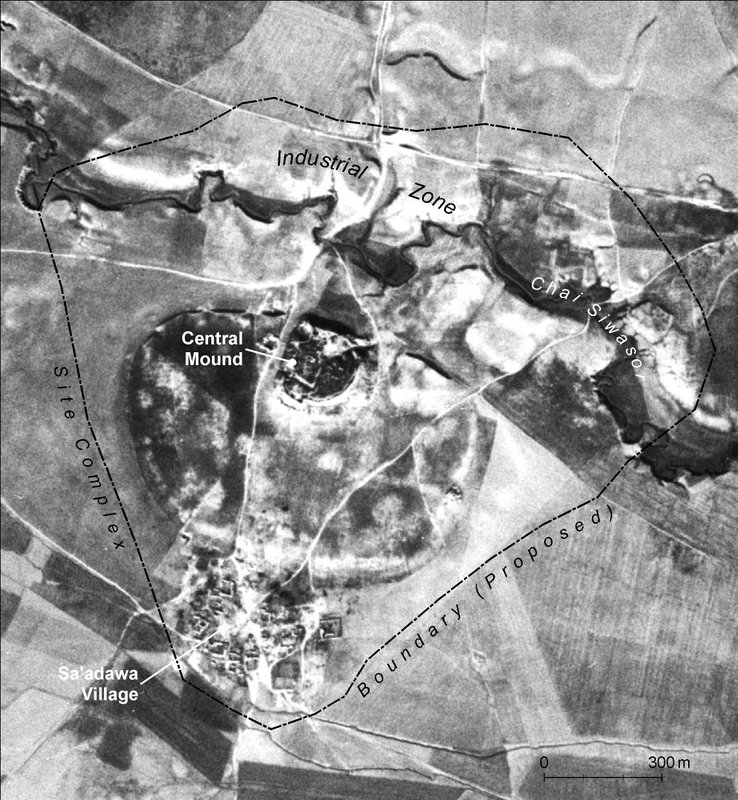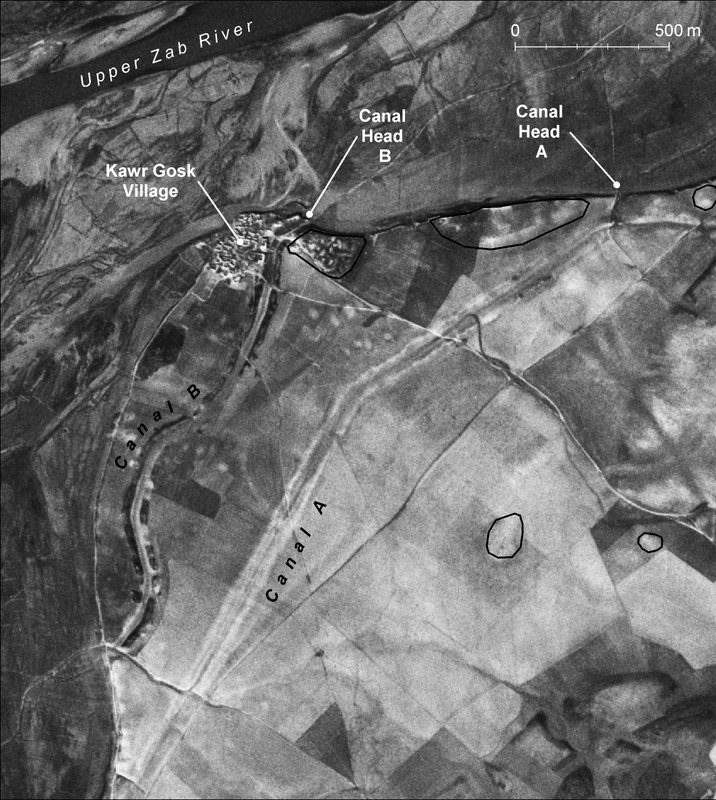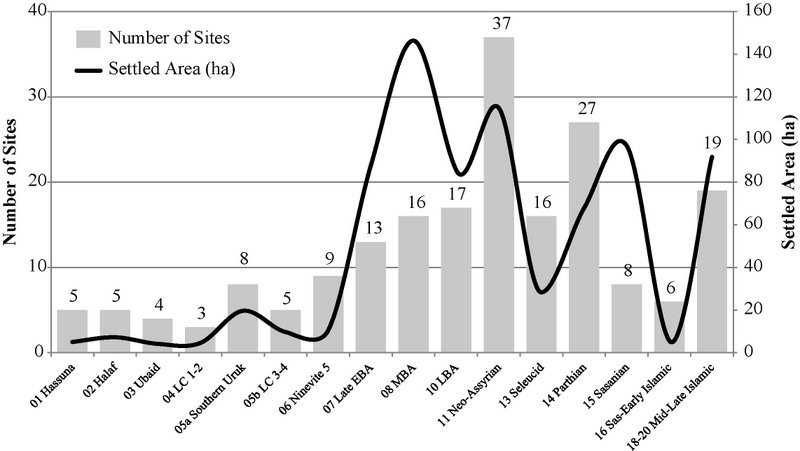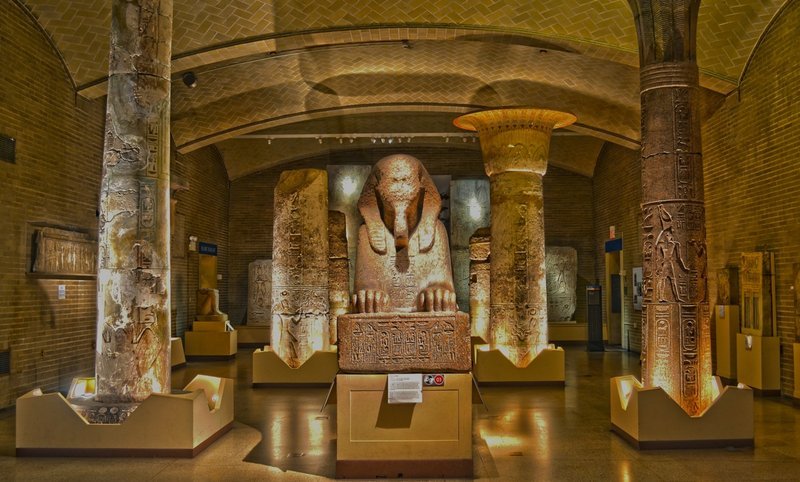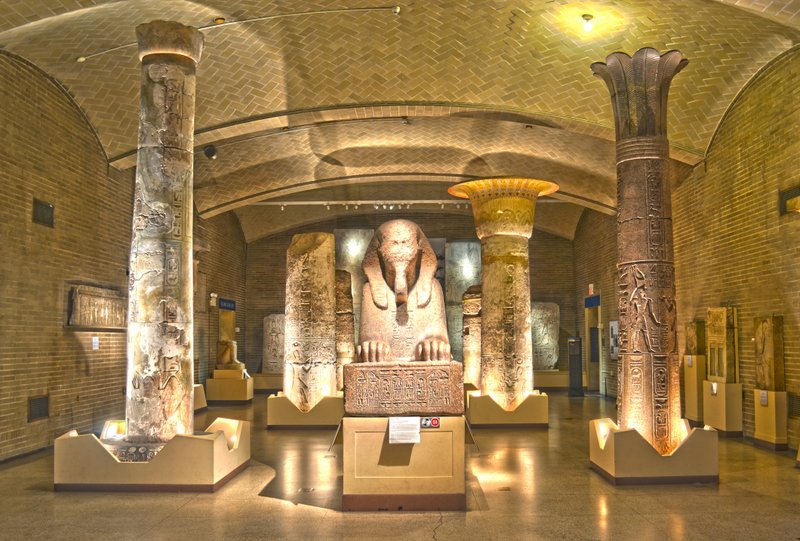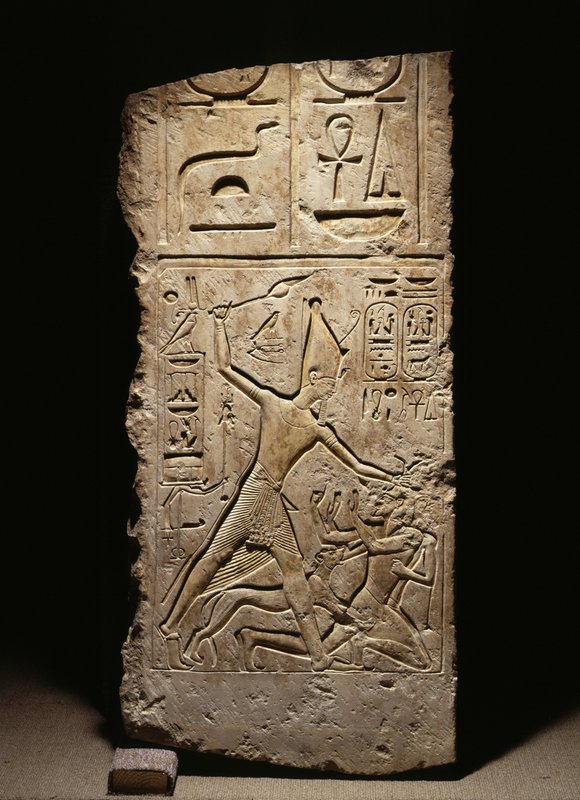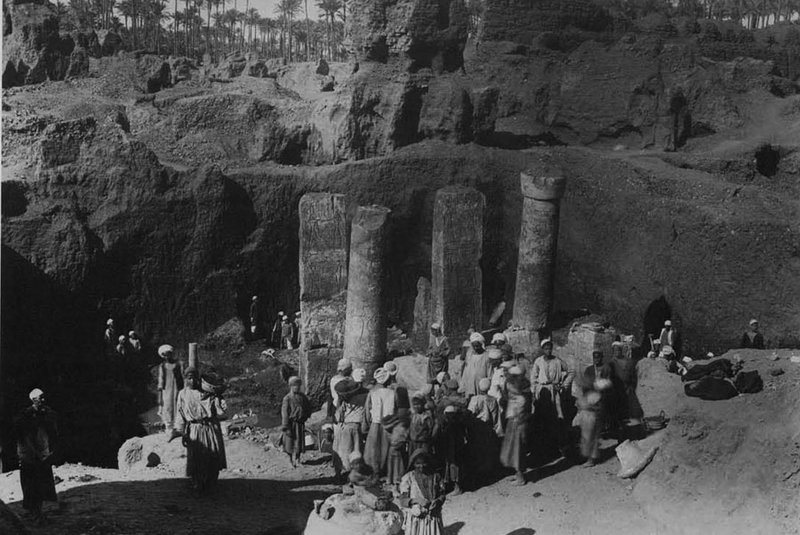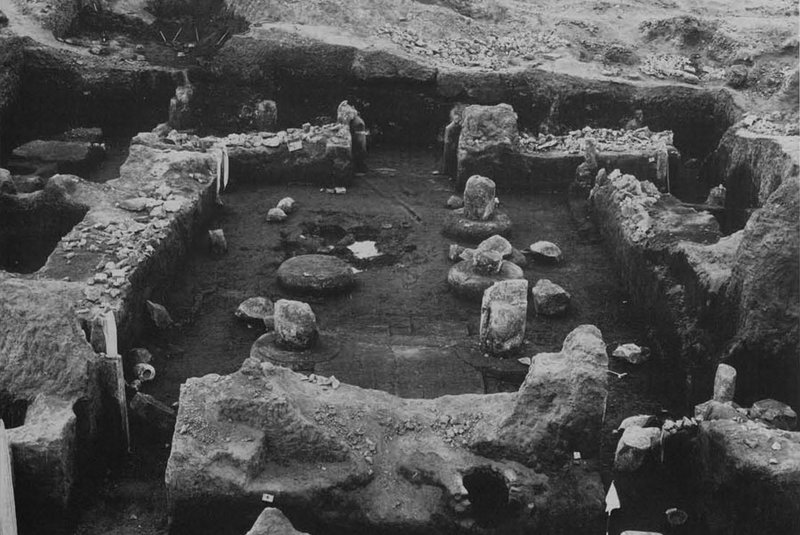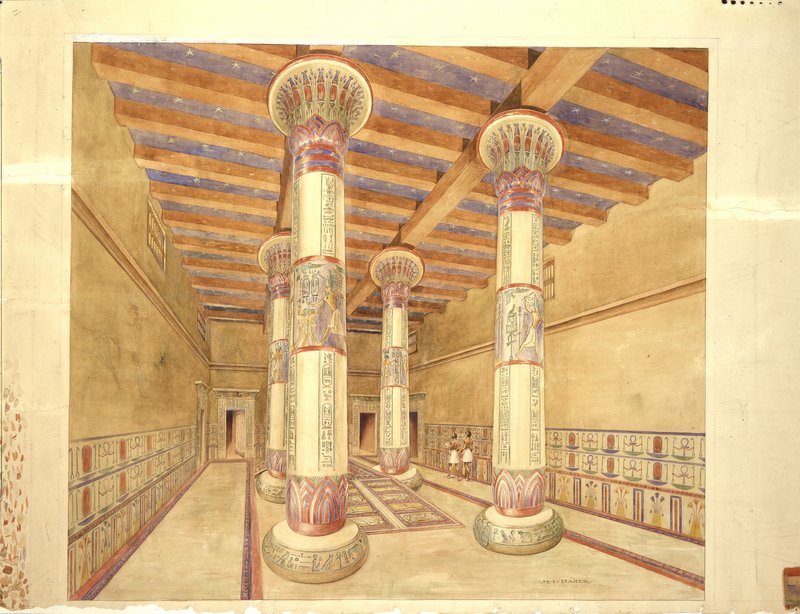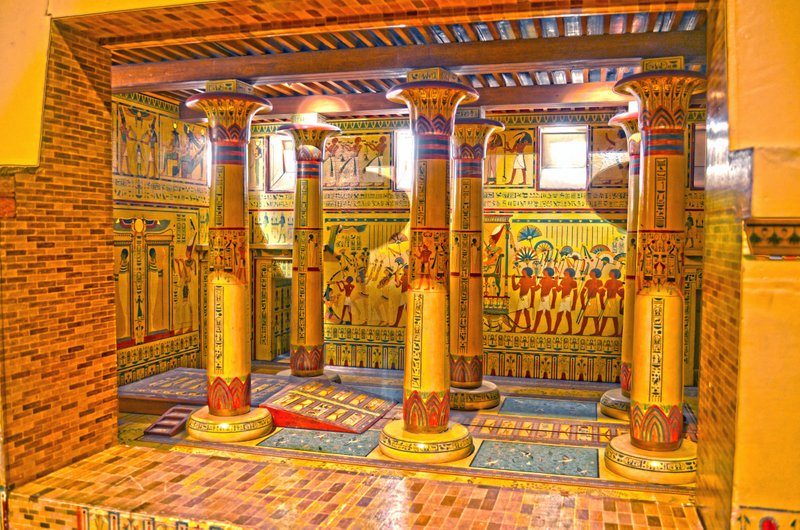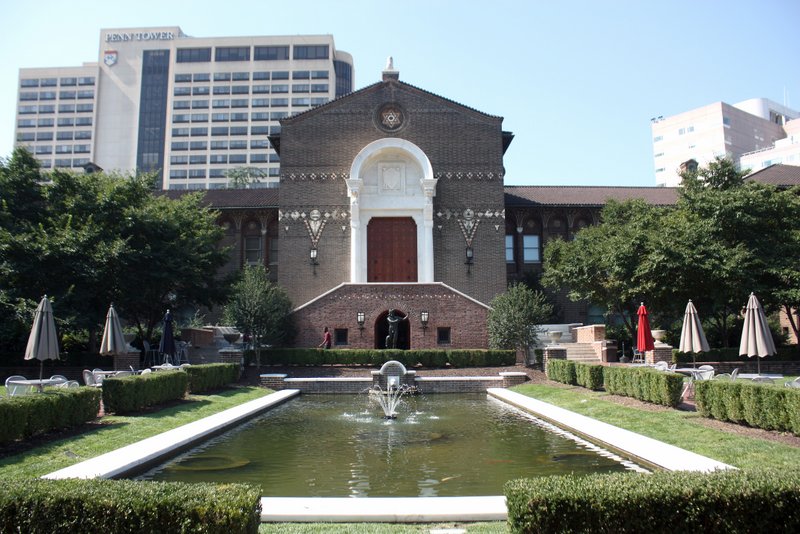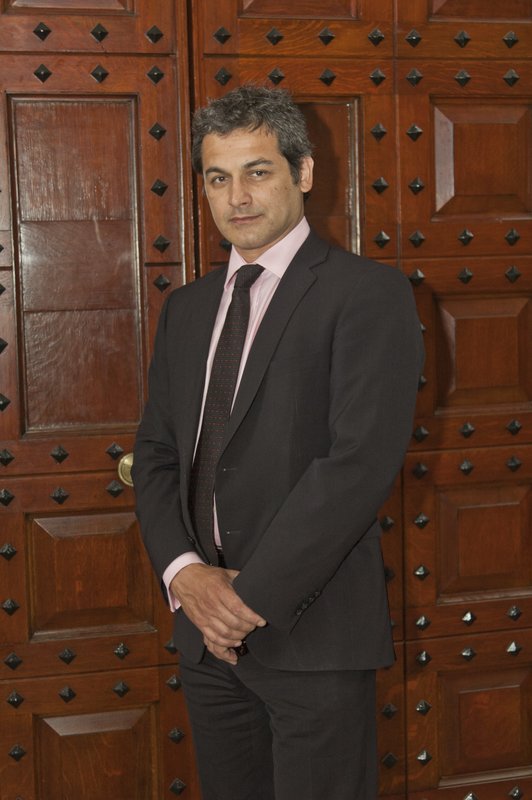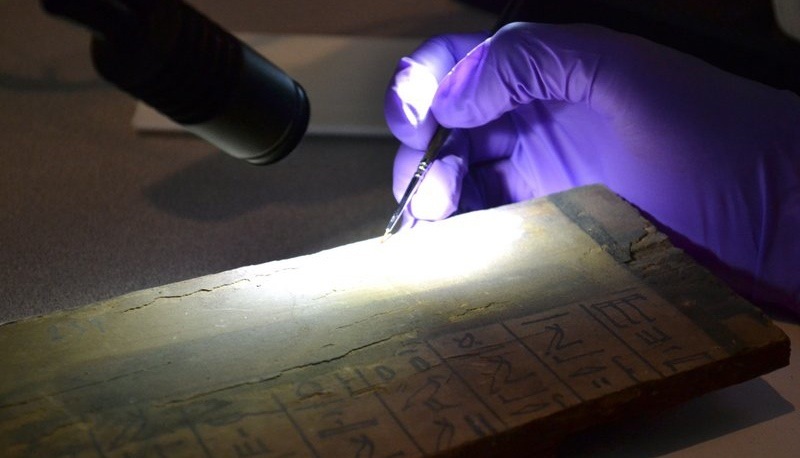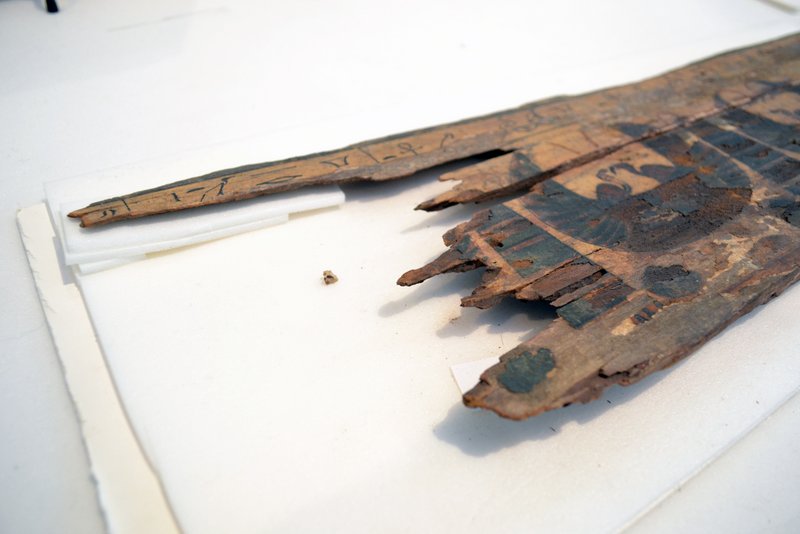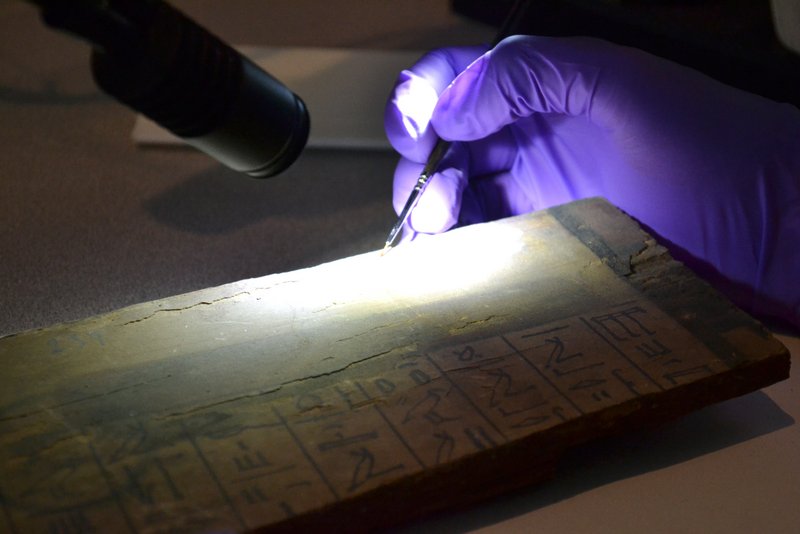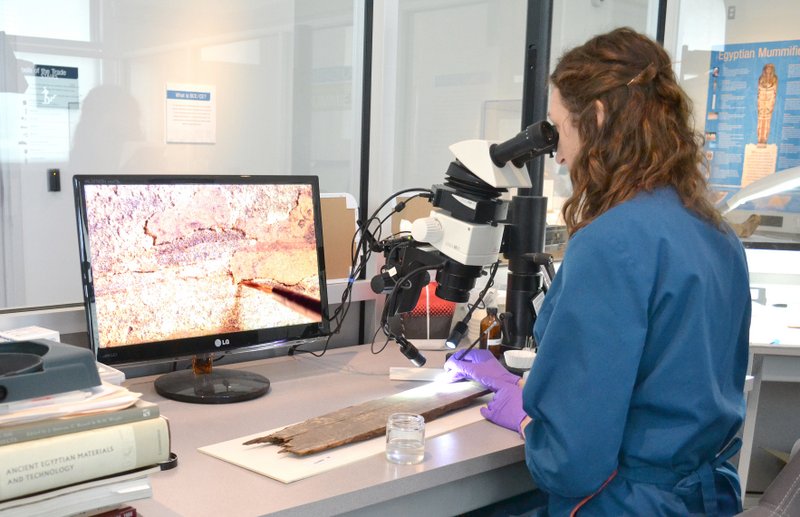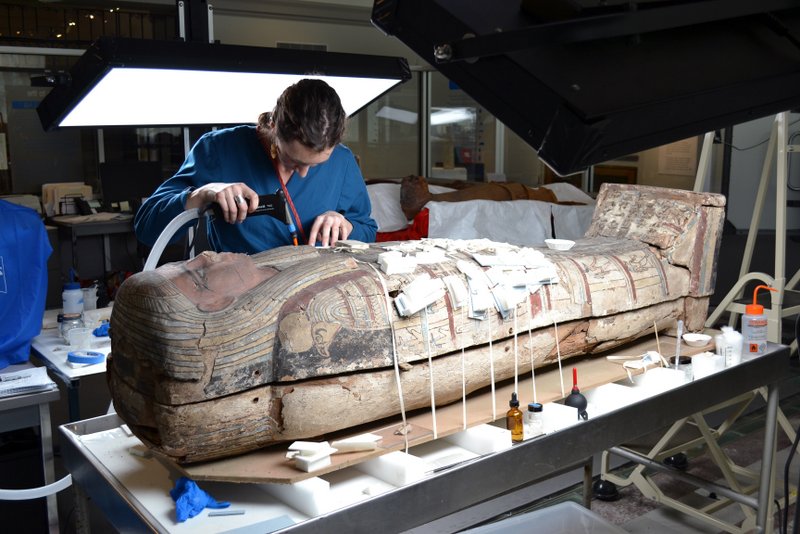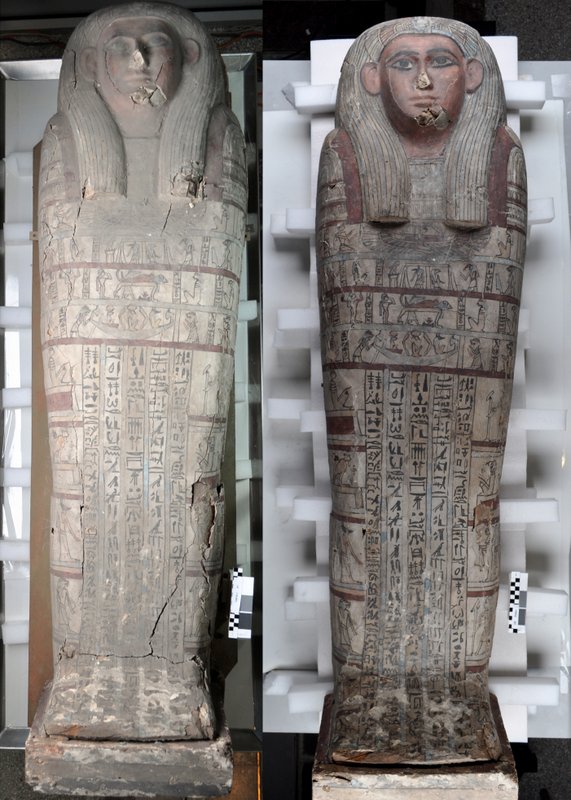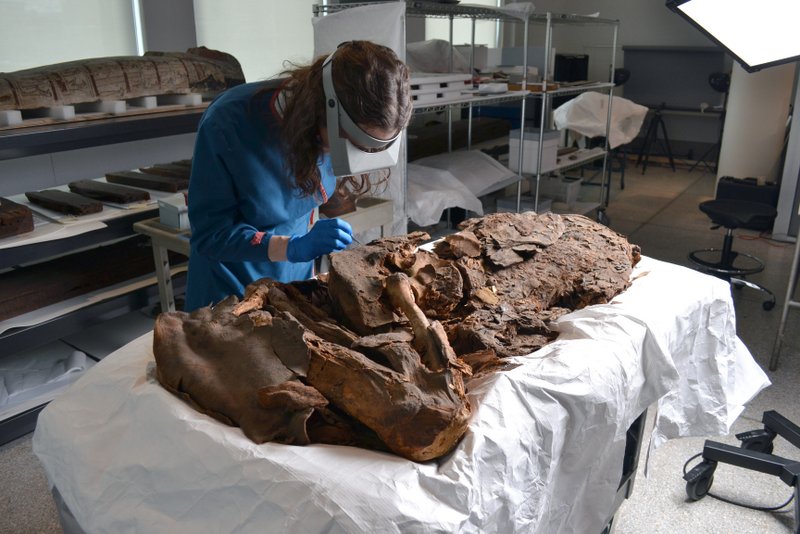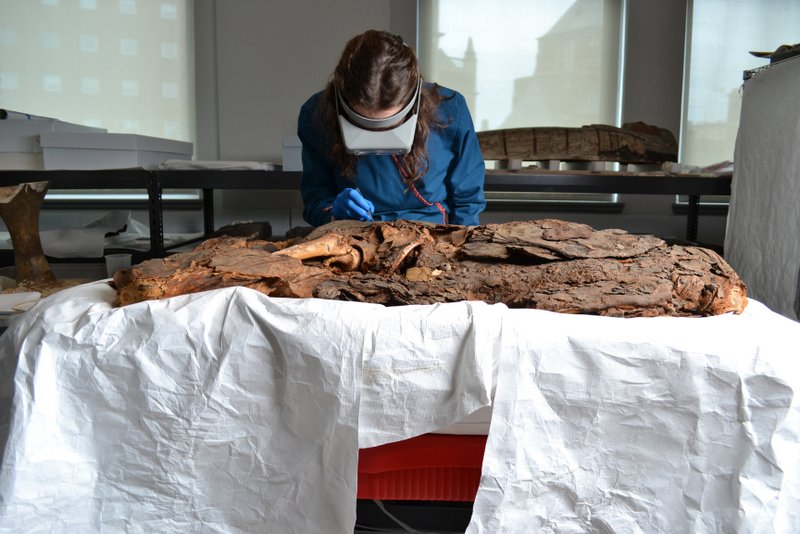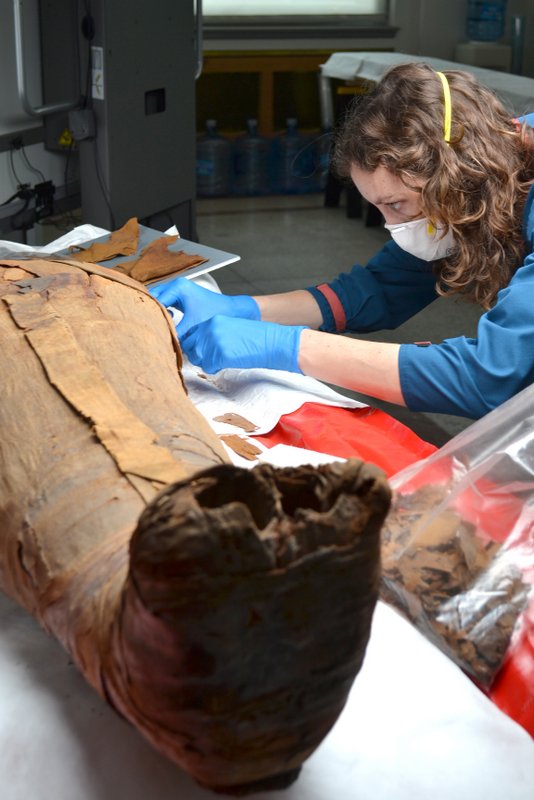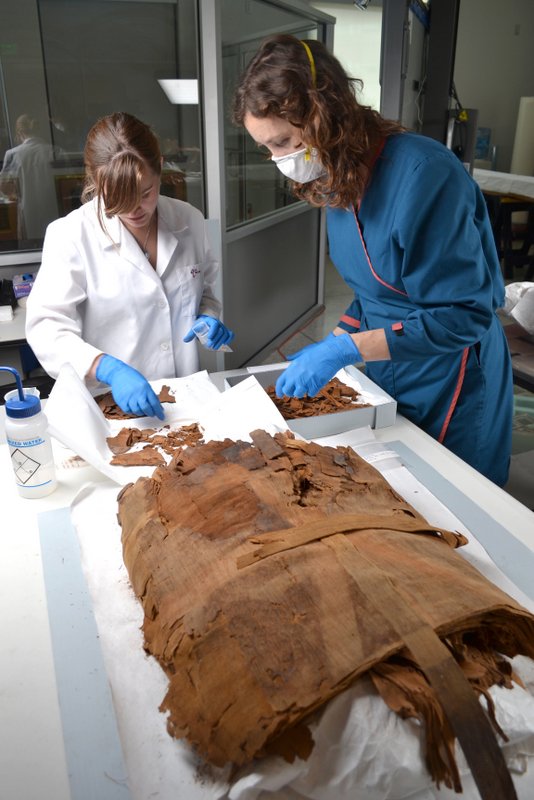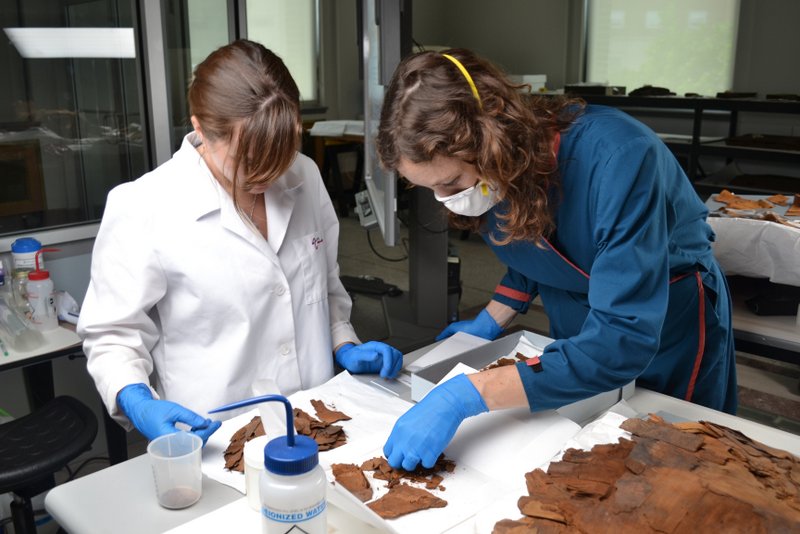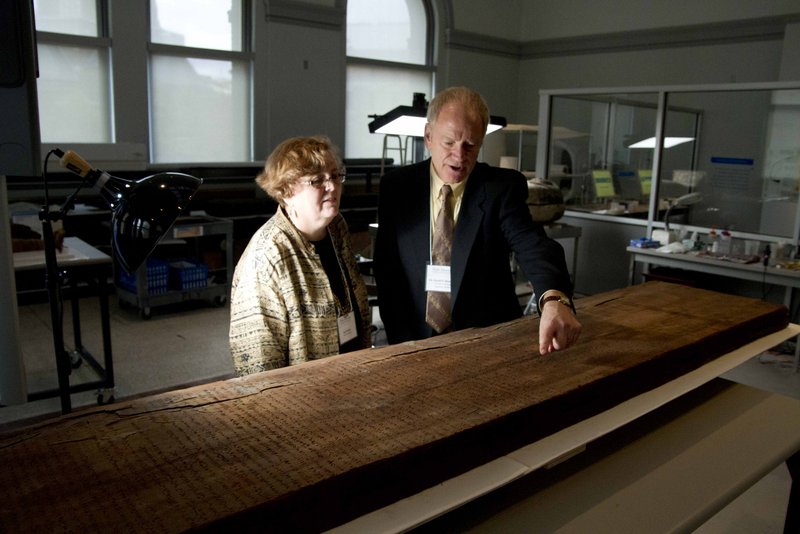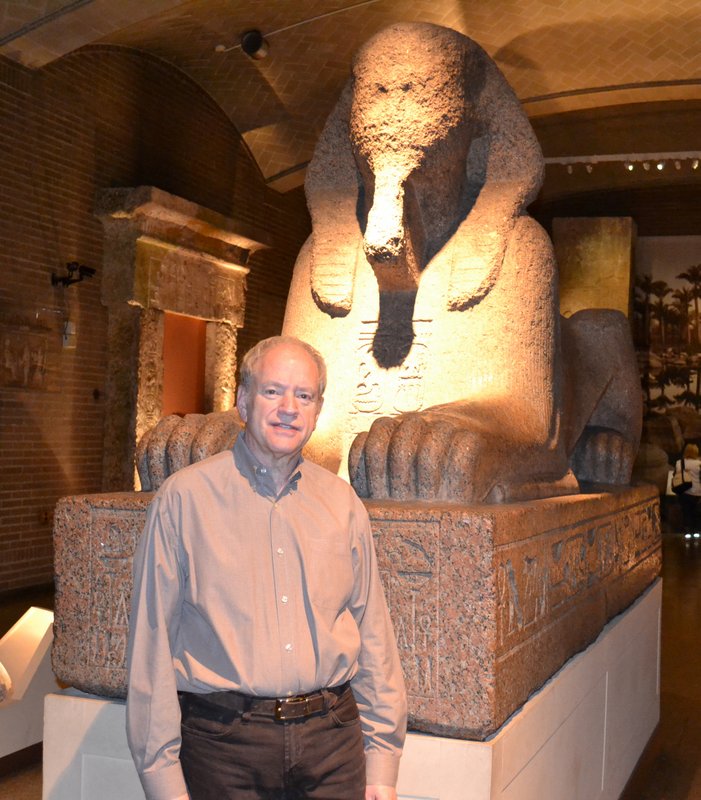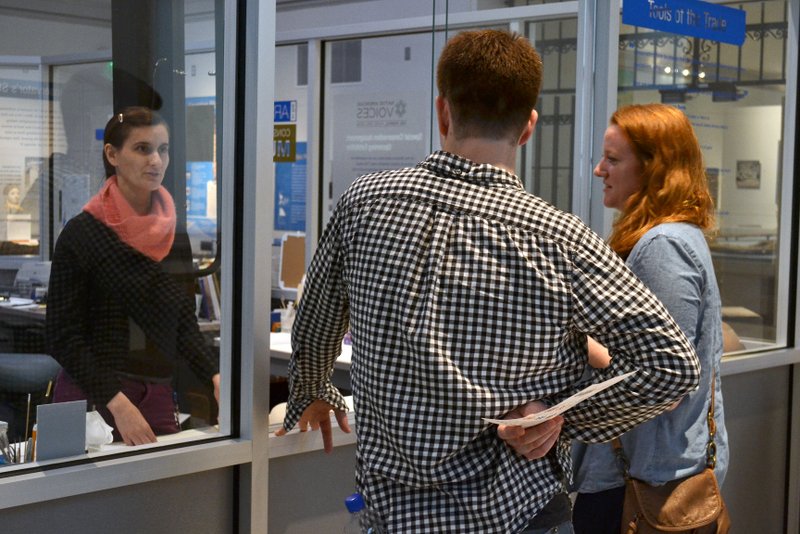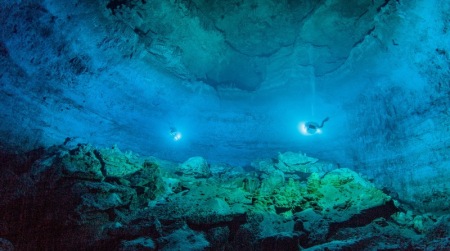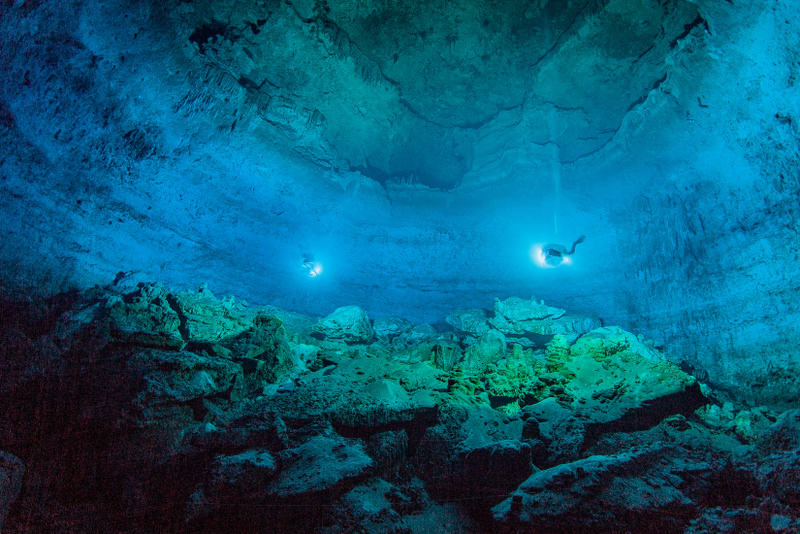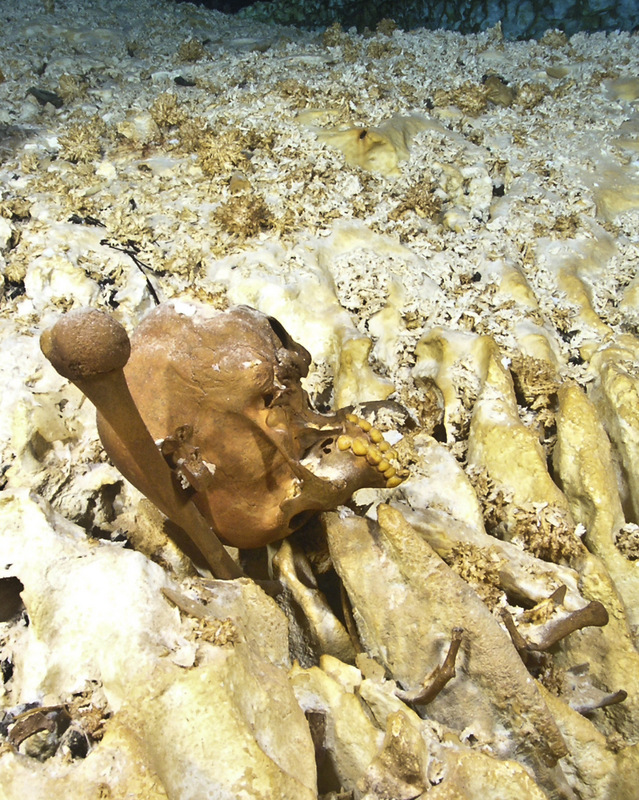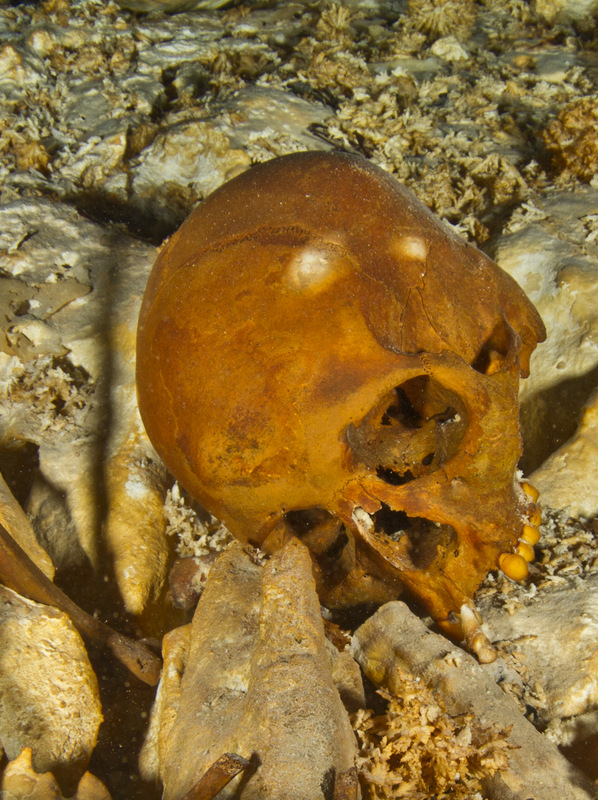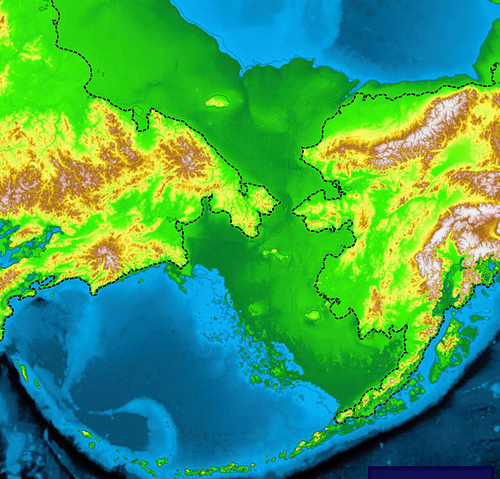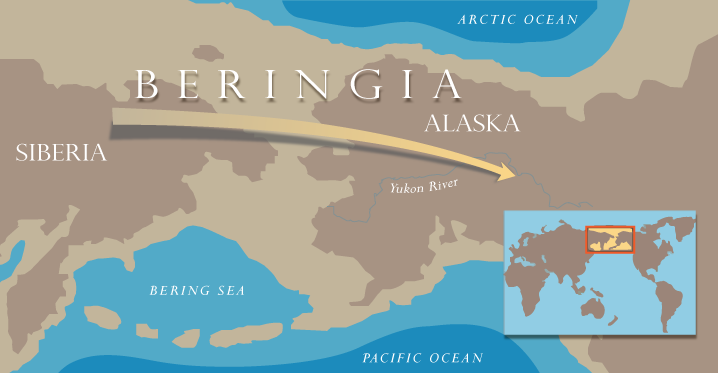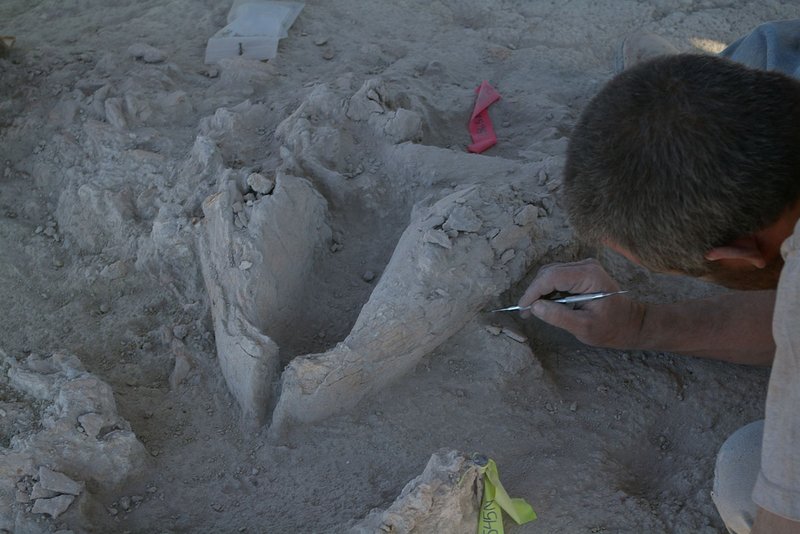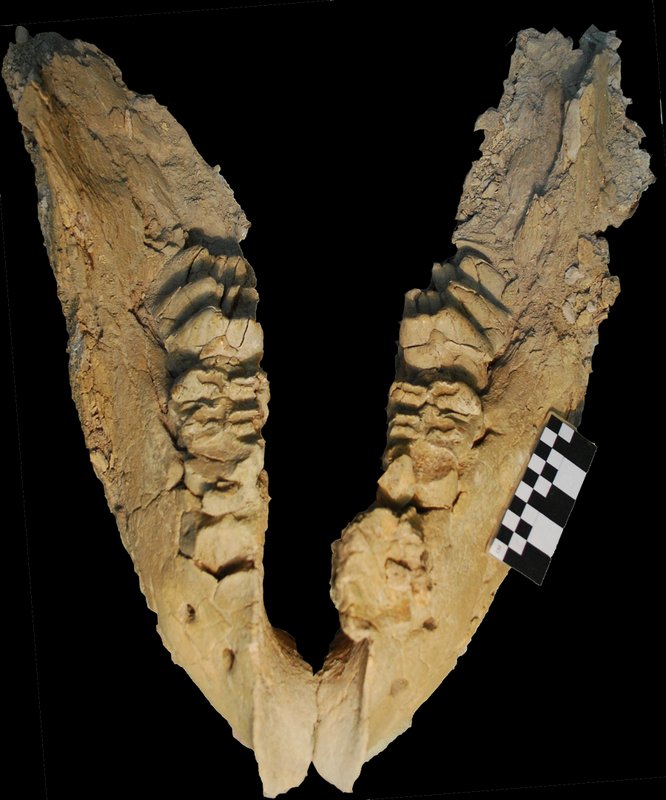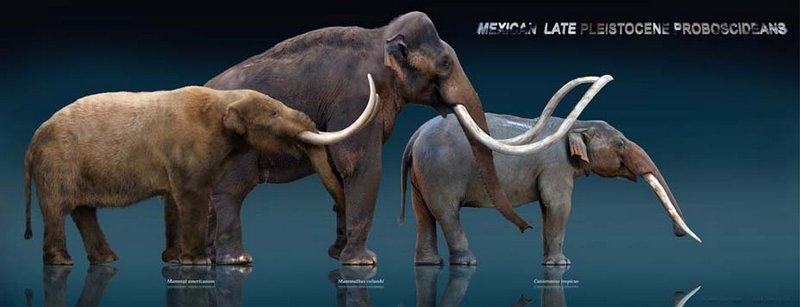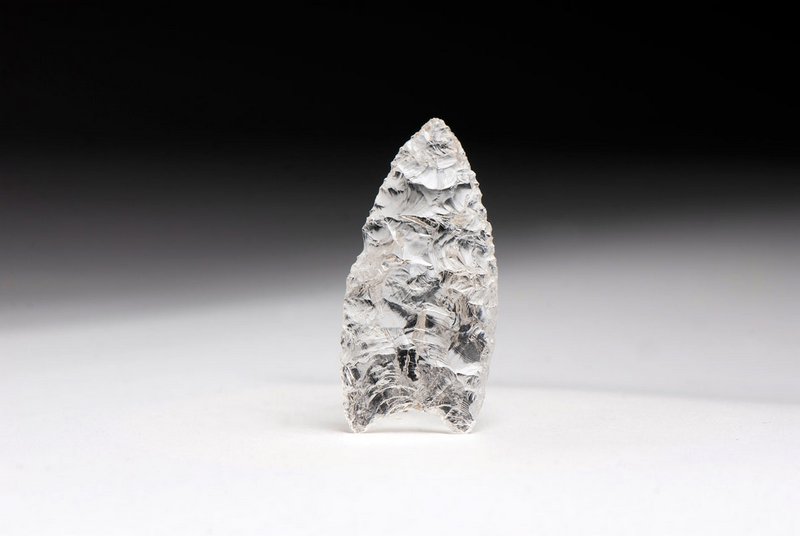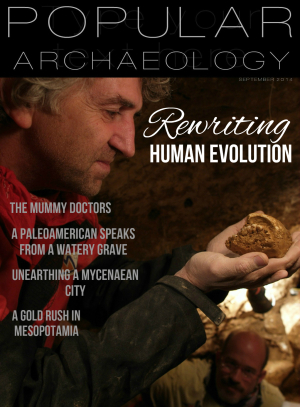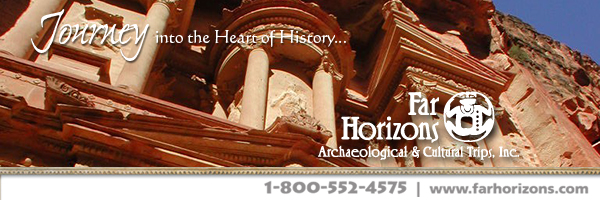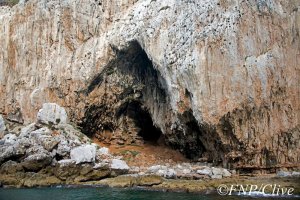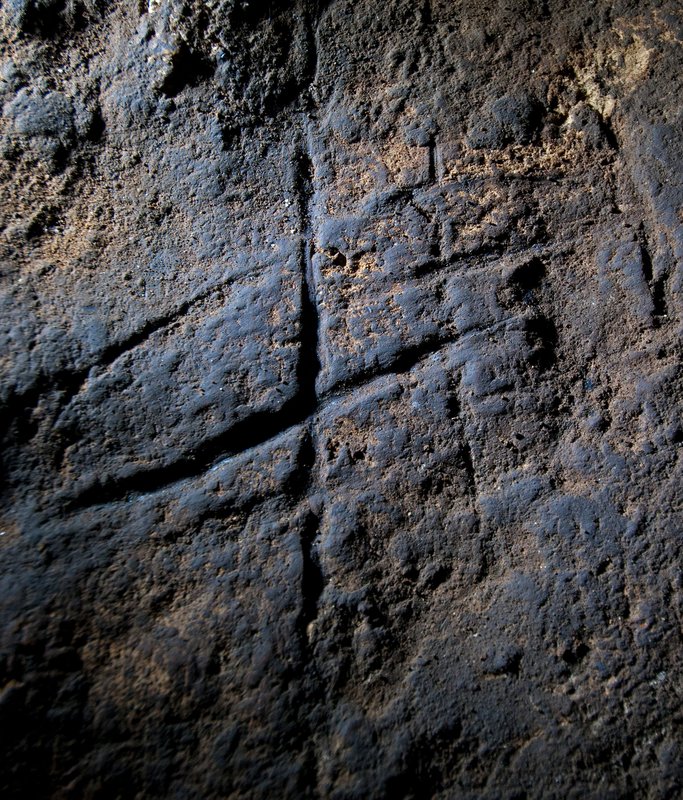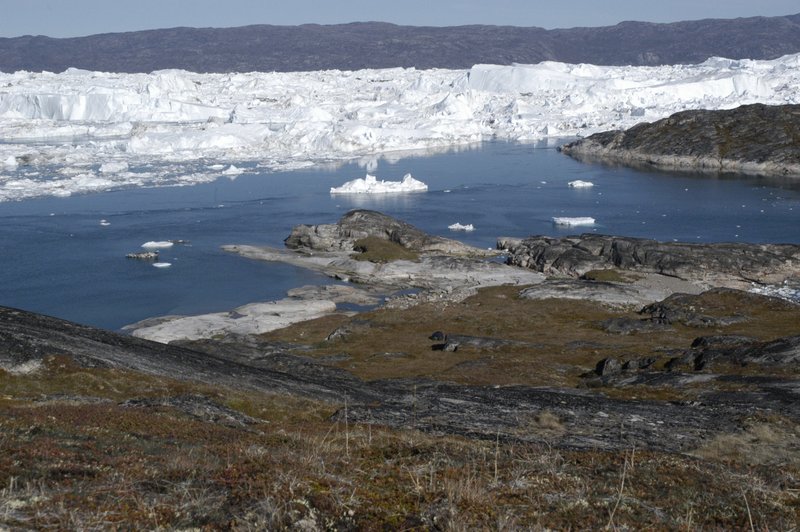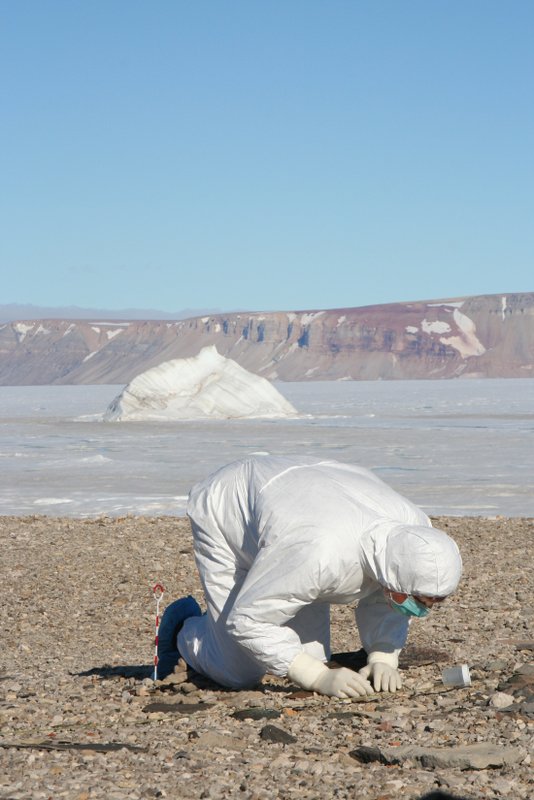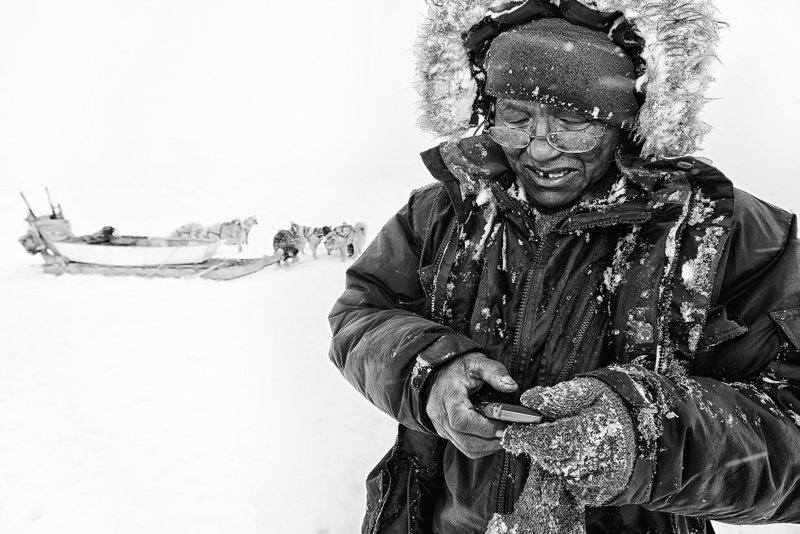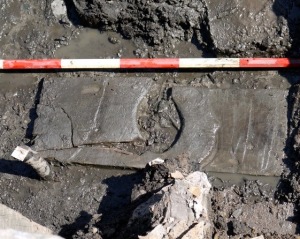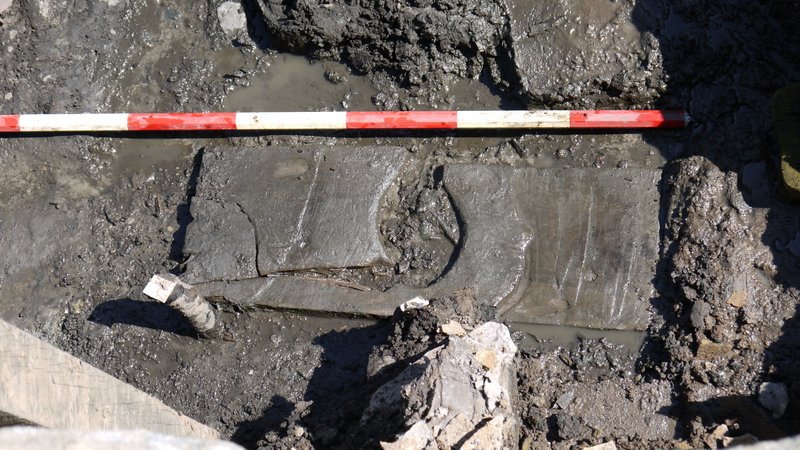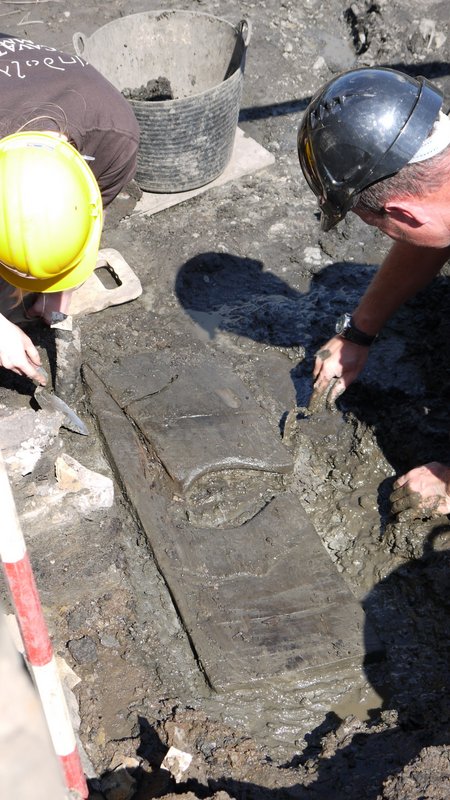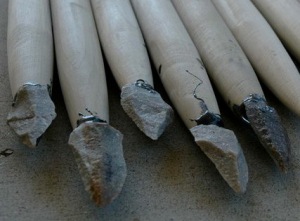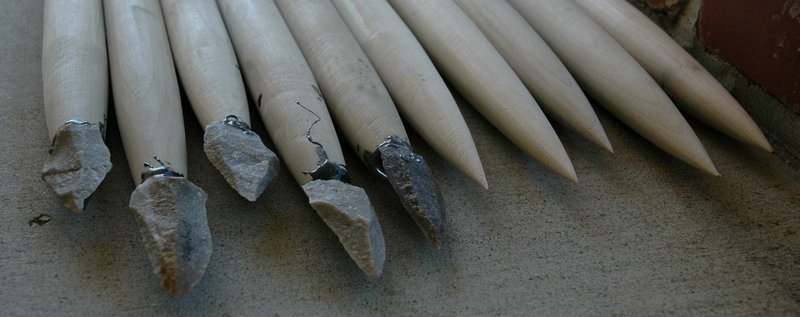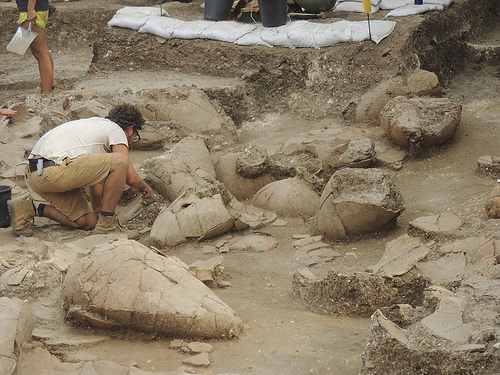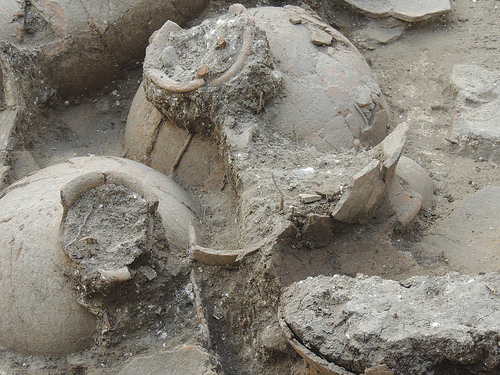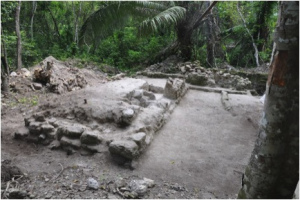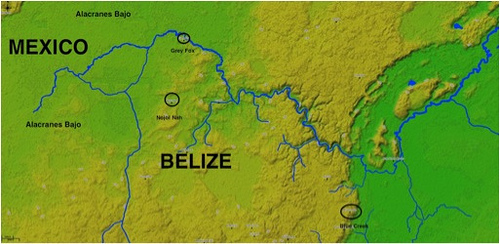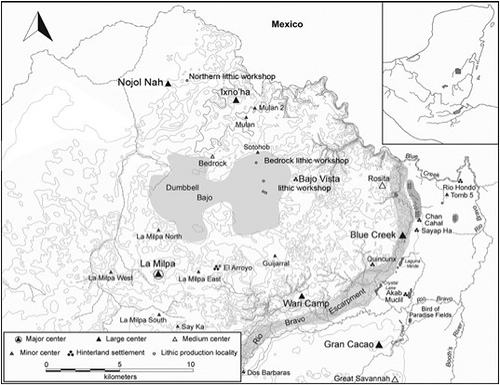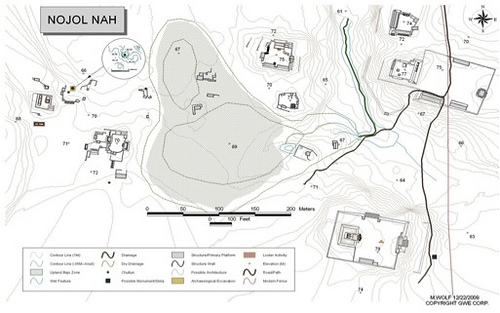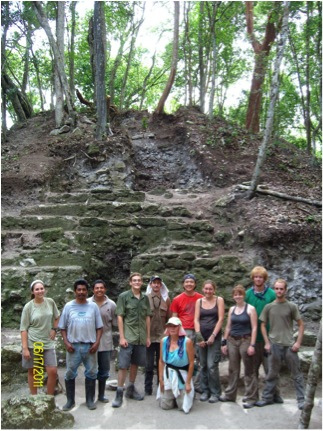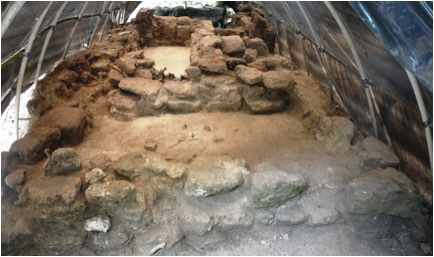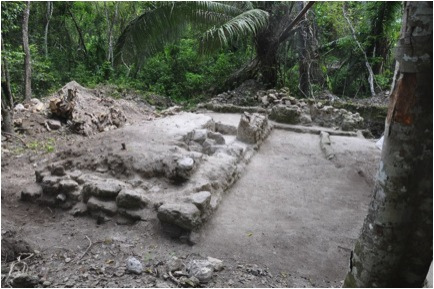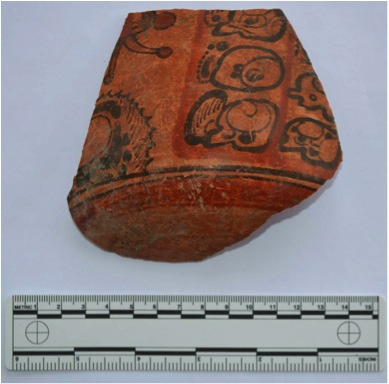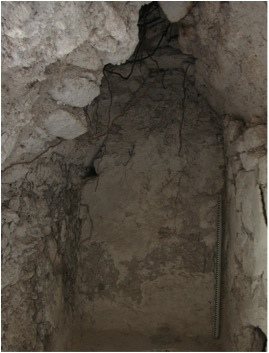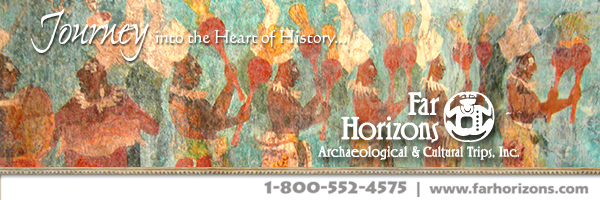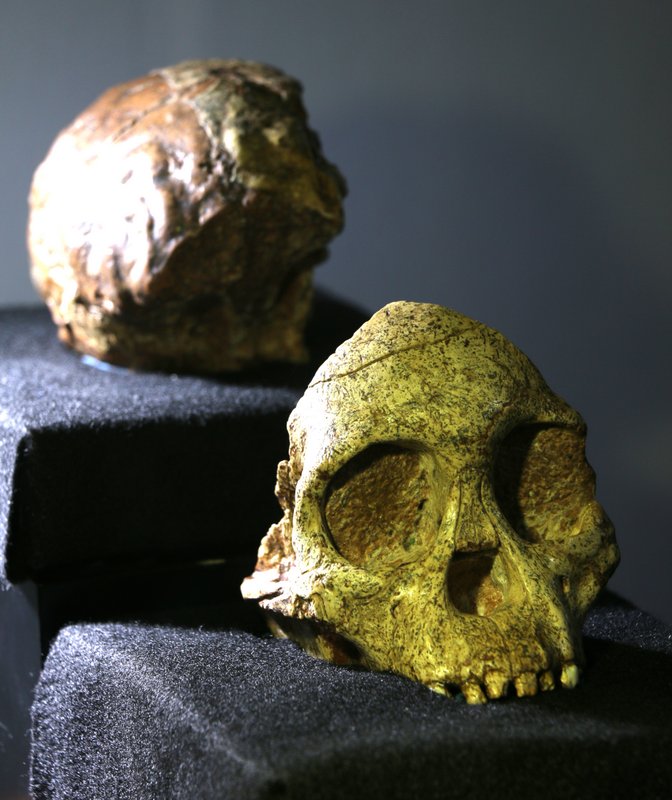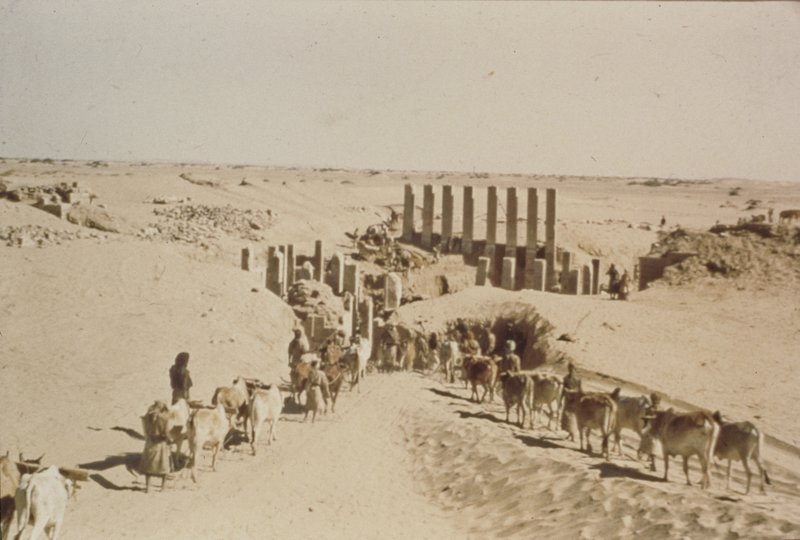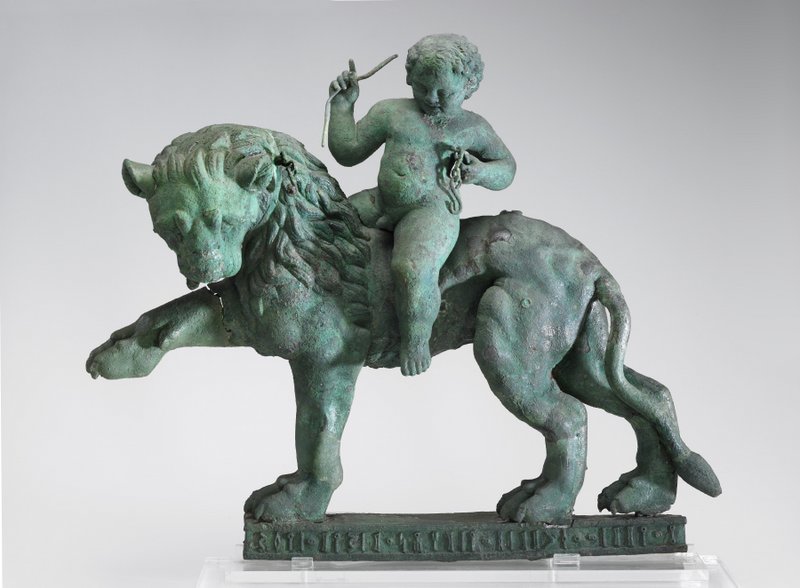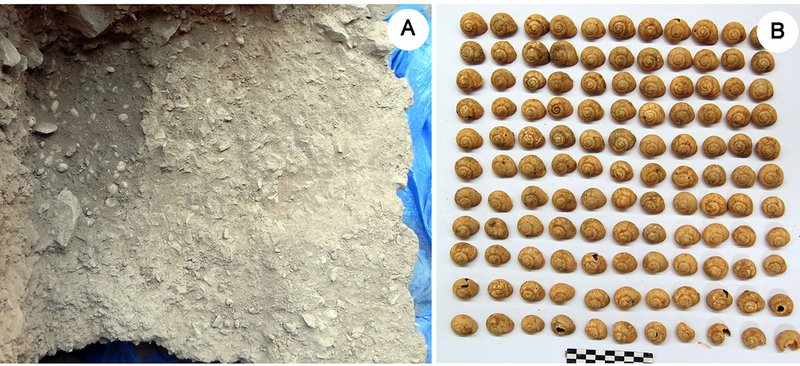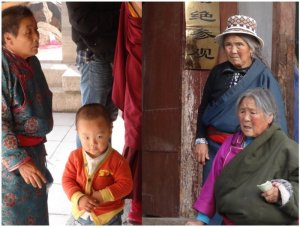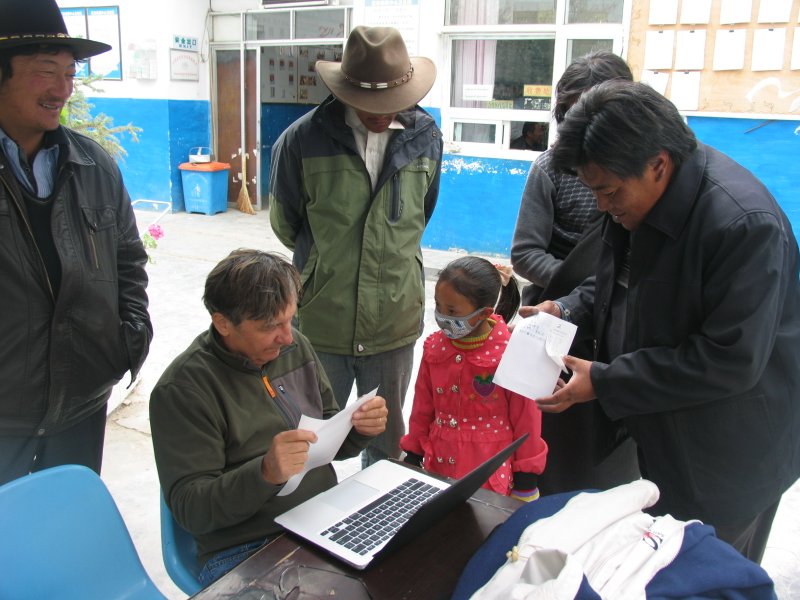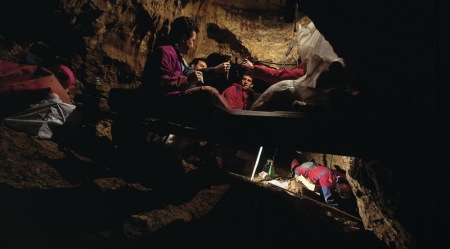
It is a cave within a cave, dark and silent.
But when the scientists are there, it is artificially lit, revealing a chamber just four meters wide, created by nature at the terminus of a natural vertical 13-meter subterranean karstic shaft. Spelunkers and scientists call it the “chimney”, and for good reason—it’s a bit like negotiating down the interior of a house chimney. Entering the shaft can only be done by traversing through yet another, much larger cave—Cueva Mayor—part of a larger karstic mountain complex in northern Spain called Atapuerca. Atapuerca is important because here in the caves of these mountains scientists have found fossils and stone tools of some of the earliest known humans in Western Europe, and this small cave at the end of the vertical shaft is arguably the star of the show. Here, over a period of 30 years, teams of archaeologists and other specialists have excavated nearly 7,000 human fossils of at least 28 individuals, individuals who lived more than 400,000 years ago. Aptly named Sima de los Huesos (“Sima”), or “Pit of Bones”, it is to date the largest single assembly of early human fossil remains ever found at any single location………
______________________________________
 A team at work inside the cave: The Sima de los Huesos site. Image courtesy Javier Trueba / Madrid Scientific Films
A team at work inside the cave: The Sima de los Huesos site. Image courtesy Javier Trueba / Madrid Scientific Films
_________________________
Game of Thrones
For Juan Luis Arsuaga, it has been perhaps the quintessential journey of his career. Currently a professor in the Paleontology Department at the Universidad Complutense de Madrid, since 1982 he has been a member of a research team investigating Pleistocene deposits in the Atapuerca Mountains. Most recently, the revelation precipitated by his most recent findings at the Sima de los Huesos (‘Sima’) site has stirred the scholarly world of human evolution studies. It centers on 17 skulls.
“An astonishing collection of skulls (up to 17) belonging to a single population, or paleo-deme, of a fossil hominin species has been recovered,” says Arsuaga. “This incredible discovery of skulls is unprecedented.” Dating to 430,000 years ago and among the most complete fossil skulls recovered from any site, “this unique collection has to be compared with the much more fragmentary and generally isolated remains yielded by other Middle Pleistocene sites in Europe and out of Europe.”
It offered Arsuaga and his team a unique opportunity to study a scene on the stage of the evolution of Middle Pleistocene humans. These 17 skulls, according to Arsuaga and colleagues, represented a single population of a hominin (early human) species. Although some of them had been studied before, seven have been presented anew, and six are now more complete than ever before, after many hours of painstaking assemblage in the lab. With these mostly intact samples for study, the researchers have finally been able to more clearly define the common features of this population.
Most striking, the examiners found that the fossils exhibited a mosaic of physical characteristics that could not be wholly attributed to any single, recognized human species to date. The skull samples showed clear Neanderthal features in the face and teeth. The researchers suggested the ‘Neanderthal-derived’ features were functionally related to mastication, or chewing. “It seems these modifications had to do with an intensive use of the frontal teeth,” Arsuaga said. “The incisors show a great wear as if they had been used as a ‘third hand,” typical of Neanderthals.” But elsewhere, the skulls showed characteristics that diverged from the Neanderthal model. The braincase itself, for example, still showed features associated with more primitive hominins.
_________________________________
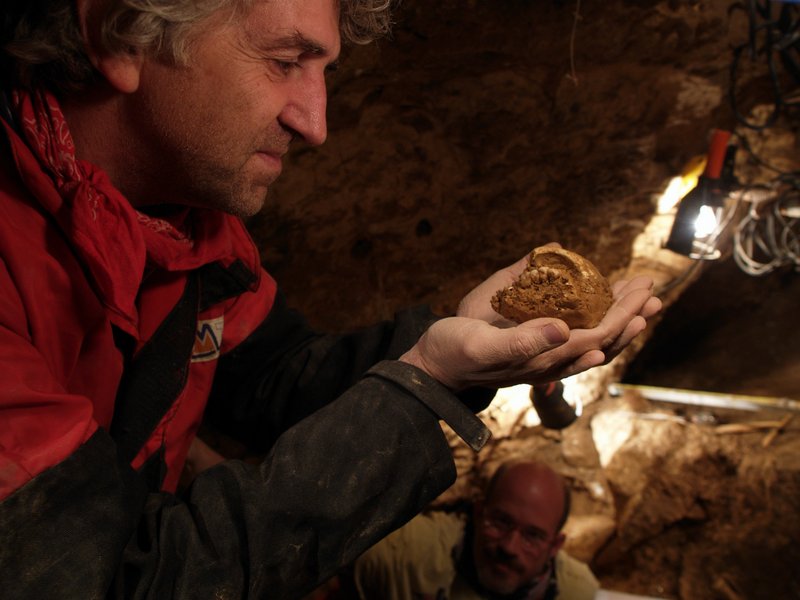 Professor Juan Luis Arsuaga holds newly excavated early human fossil inside Sima de los Huesos cave. Image courtesy Javier Trueba / Madrid Scientific Films
Professor Juan Luis Arsuaga holds newly excavated early human fossil inside Sima de los Huesos cave. Image courtesy Javier Trueba / Madrid Scientific Films
_________________________________
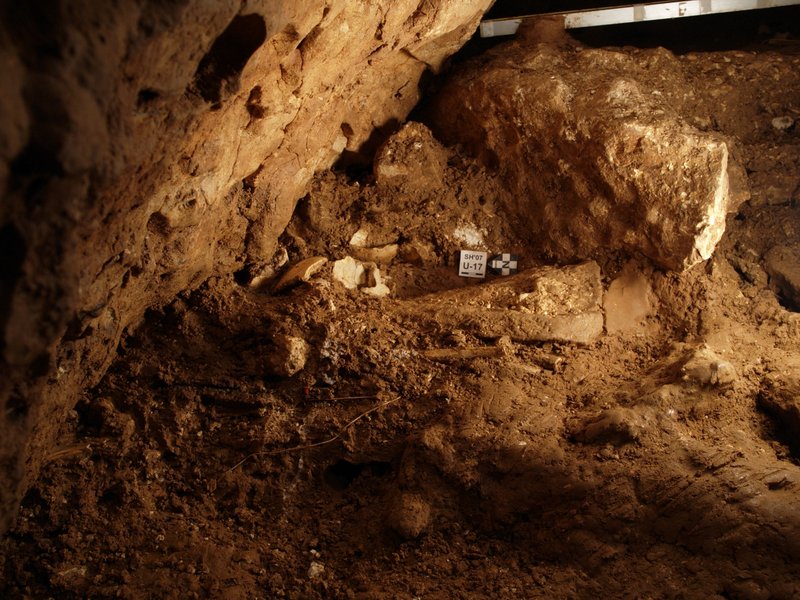 Location of skull 17 at the Sima de los Huesos site. Image courtesy Javier Trueba / Madrid Scientific Films
Location of skull 17 at the Sima de los Huesos site. Image courtesy Javier Trueba / Madrid Scientific Films
_________________________________
So what did these findings mean?
“Morphologically, the Sima de los Huesos skulls exhibit some (generally incipient) Neanderthal traits,” said Arsuaga. “These traits have been scrutinized to understand how the Neanderthal specializations developed……..and it is now clear that the full suite of Neanderthal characteristics did not evolve at the same pace.”
However, according to Arsuaga,”we think based on the morphology that the Sima people were part of the Neanderthal clade, although not necessarily direct ancestors to the classic Neanderthals.”
“One thing that surprised me about the skulls we analyzed,” Arsuaga continued, “is how similar the different individuals were. The other fossils of the same geological period are different and don’t fit in the Sima pattern. This means that there was a lot of diversity among different populations in the Middle Pleistocene.”
__________________________________
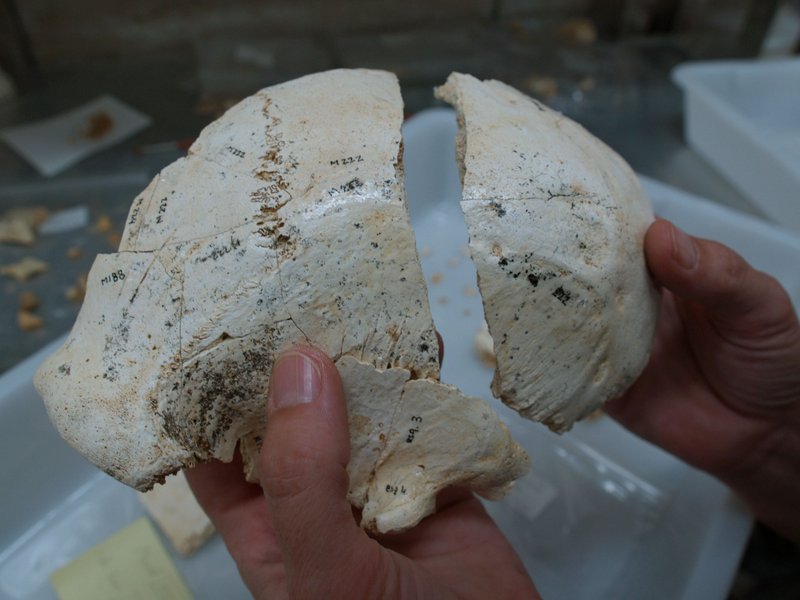 Reconstruction of skull 15. Image courtesy Javier Trueba / Madrid Scientific Films
Reconstruction of skull 15. Image courtesy Javier Trueba / Madrid Scientific Films
___________________________________
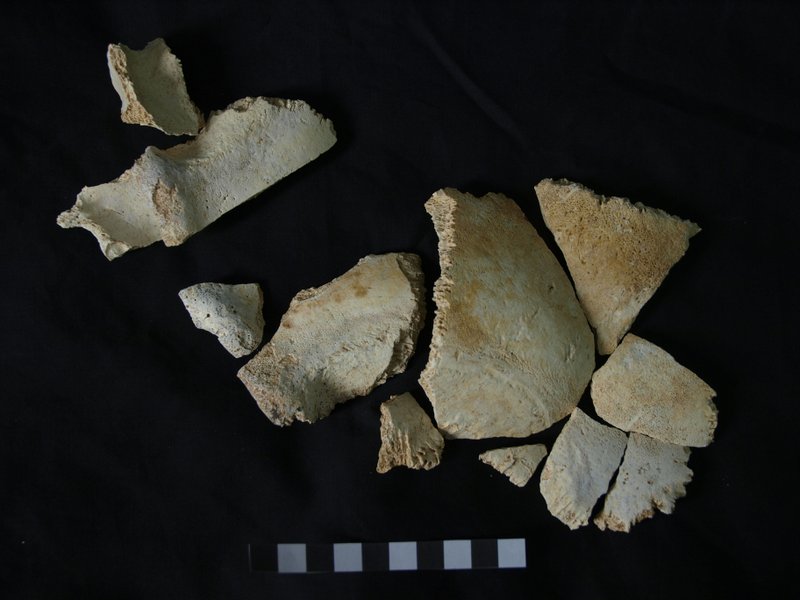 Reconstruction of skull 17. Image courtesy Javier Trueba / Madrid Scientific Films
Reconstruction of skull 17. Image courtesy Javier Trueba / Madrid Scientific Films
__________________________________
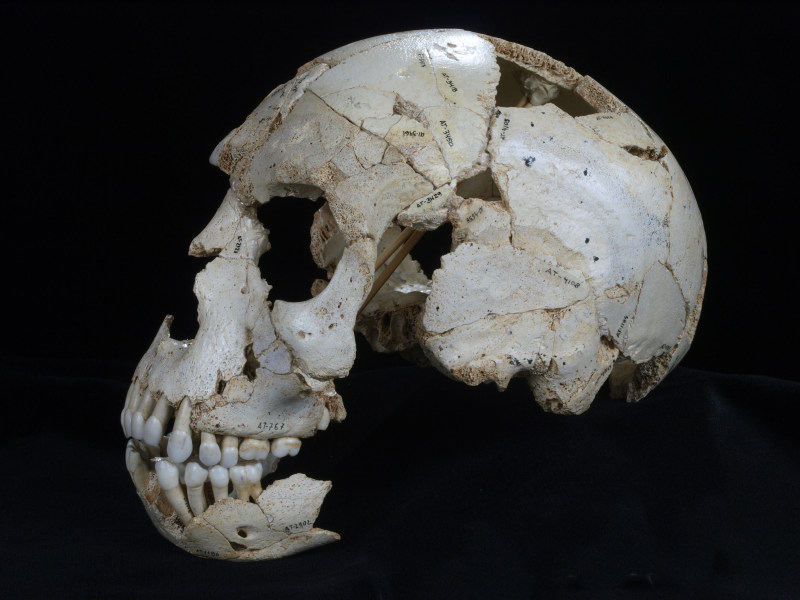 Reconstructed skull 9 of the 17 skulls found at the site. Image courtesy Javier Trueba / Madrid Scientific Films
Reconstructed skull 9 of the 17 skulls found at the site. Image courtesy Javier Trueba / Madrid Scientific Films
__________________________________
 Skull 15. Image courtesy Javier Trueba / Madrid Scientific Films
Skull 15. Image courtesy Javier Trueba / Madrid Scientific Films
__________________________________
 Skull 17. Image courtesy Javier Trueba / Madrid Scientific Films
Skull 17. Image courtesy Javier Trueba / Madrid Scientific Films
_________________________________
In other words, because other European Middle Pleistocene fossil specimens found in Europe have not exhibited the combination of features seen in this fossil group, the researchers have concluded that more than one evolutionary lineage appears to have coexisted during the European Middle Pleistocene, with that represented by the Sima sample being closer to the Neanderthals.
“We propose what we call the “Game of Thrones theory” to explain hominin evolution in Europe and a part of Asia in the period known as the Middle Pleistocene (780,000 years ago to 130,000 years ago),” said Arsuaga. “According to this scenario, hominin evolution was not a peaceful and “boring” process of very slow change throughout time and across an immense land: the European continent and Western and Central Asia. There was not simply one kind of hominin living in that big territory and quietly evolving everywhere towards the “classic” (Late Pleistocene) Neanderthals.” This early human landscape, at least according to this team of scientists, featured something of a potpouri of morphologically and perhaps culturally distinct human groups or populations. To complicate the picture yet more, the team has found that a DNA study of a bone sample from Sima indicates that these humans shared a common ancestor with the Denisovans (another extinct archaic human species that likely lived in Asia) about 700,000 years ago. “The fact that the mtDNA (mitochondrial DNA) of the Sima de los Huesos hominin shares a common ancestor with Denisovan rather than Neanderthal mtDNAs is unexpected since its skeletal remains carry Neanderthal-derived features”, says Matthias Meyer, a key scientist with the Max Planck Institute for Evolutionary Anthropology in Leipzig, Germany, who led the genetic study. Another possibility is that the Denisova genes were introduced from another group of hominins into the Sima hominin population, or their ancestors.
In any case, Arsuaga’s “Game of Thrones” scenario and the genetic study results didn’t fit neatly into the traditional picture of Neanderthal evolution. It shook the applecart—a model that long suggested that Neanderthal traits all evolved in somewhat linear fashion, in unison from an earlier single species, theorized to be Homo heidelbergensis.
____________________________________
 The Sima de los Huesos team. Image courtesy Javier Trueba / Madrid Scientific Films
The Sima de los Huesos team. Image courtesy Javier Trueba / Madrid Scientific Films
Changing Paradigms
For those who follow the paths of thinking about how humans became what they are today, the discoveries at Sima are among a number of recent developments in the field and in the labs that are effectuating a new pattern of making and remaking evolutionary paradigms and calling into question some long-standing constructs.
One case in point: Researching a Late Pleistocene site in China, researchers Xiu-Jie Wu, Wu Liu and Song Xing of the Institute of Vertebrate Paleontology and Paleoanthropology, Beijing, Isabelle Crevecoeur of PACEA, Université de Bordeaux, France, and Erik Trinkaus of Washington University in St. Louis, re-examined a circa 100,000-year-old archaic human skull originally found during excavations 35 years ago at the Xujiayao site in China’s Nihewan Basin. The skull belonged to a human species not classified as Neanderthal, but based on their micro-CT scans of the interior configuration of the temporal bone, they found that the inner-ear formation closely resembled the formation long identified exclusively with Neanderthals.
On the surface, this appears to be a small thing. But in the worlds of paleoanthropology and paleontology, especially as they relate to human evolution, the implications are significant, because the temporal labyrinth has been broadly considered a key characteristic that has set Neanderthals apart from earlier and modern humans.
“We were completely surprised,” Trinkaus said. “We fully expected the scan to reveal a temporal labyrinth that looked much like a modern human one, but what we saw was clearly typical of a Neandertal. This discovery places into question whether this arrangement of the semicircular canals is truly unique to the Neandertals.” Moreover, he said, “the discovery places into question a whole suite of scenarios of later Pleistocene human population dispersals and interconnections based on tracing isolated anatomical or genetic features in fragmentary fossils. It suggests, instead, that the later phases of human evolution were more of a labyrinth of biology and peoples than simple lines on maps would suggest……It shows that human populations in the real world don’t act in nice simple patterns.”
__________________________________
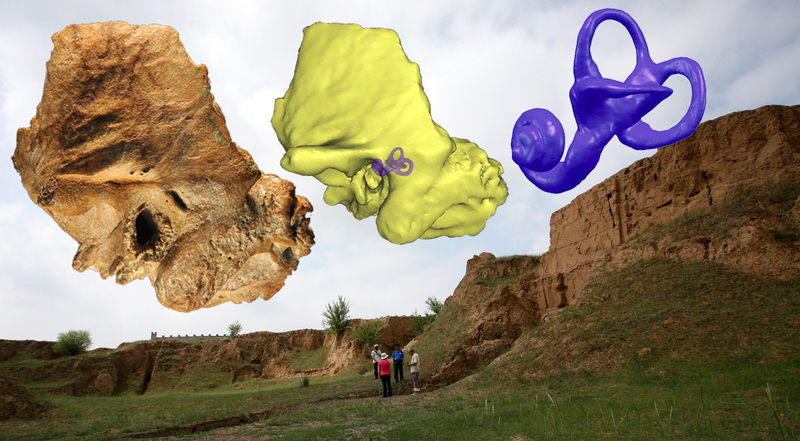 The Xujiayao 15 late archaic human temporal bone from northern China, with the extracted temporal labyrinth, superimposed on a view of the Xujiayao site. Courtesy Institute of Vertebrate Paleontology and Paleoanthropology, Chinese Academy of Science
The Xujiayao 15 late archaic human temporal bone from northern China, with the extracted temporal labyrinth, superimposed on a view of the Xujiayao site. Courtesy Institute of Vertebrate Paleontology and Paleoanthropology, Chinese Academy of Science
___________________________________________
The Dmanisi Illumination
David Lordkipanidze has been excavating at the site near the town of Dmanisi in the Republic of Georgia for decades. He is a paleoanthropologist and Director of the Georgian National Museum. He is best known for the news-making discoveries he has been making at the site, known now in the popular literature and press after its namesake town. It was here, in 1991, when he and his team of researchers first uncovered a remarkable fossilized mandible (the lower jaw). It appeared to be human—but quite different from a modern human mandible. It was more like what scientists had been finding for decades only in East and South Africa—fossils of what paleoanthropologists know to be some of the earliest members of our kind—genus Homo—the genus that includes modern humans and species closely related to them—human ancestors that lived between 1 million and 2 million years ago. Scientists began scratching their heads. Geographically, this fossil appeared to be several thousands of miles off course. And the associated stone tools resembled the earliest known stone tool technology, the Oldowan, found, until now, only in Africa. It challenged the long-accepted models of a significantly later first exodus of early Homo out of Africa, more advanced Homo erectus groups who carried with them a more sophisticated technology, the Acheulean, a 1.5+ million-year-old tradition forged in Africa and best known for its hallmark, distinctive oval and pear-shaped handaxes.
What followed was a series of incredible discoveries that, together, proved to shake up the world of human prehistory almost without parallel. Three other remarkably complete and well-preserved fossil skulls, including an assortment of other fossils, were unearthed and pieced together during the ensuing years.
But the latest find brought yet new surprises.
In 2005, Lordkipanidze and his team uncovered yet another well-preserved early Homo fossil. Designated as specimen ‘D4500′, it turned out to be the matching cranium to another fossil find uncovered 5 years earlier—a complete mandible they designated ‘D2600’. These two fossils were discovered alongside the remains of the four other early Homo fossil skulls, animal fossils, and the simple Oldowan-like stone tools. Designated Skull 5, the new cranium together with its mandible displayed a relatively small braincase with a long face and large teeth. Other similar early Homo fossils, all found in African contexts, were either incomplete, or adolescent or younger individuals. According to Lordkipanidze and his associates, this new find constituted “the most complete adult skull known from Early Pleistocene Homo.“* Moreover, like some of the other finds, it was associated with other parts of the body that exhibited characteristics akin to Homo erectus body engineering, which closely approximates that of modern human morphology. In other words, this species had a very human-like body.
___________________________________
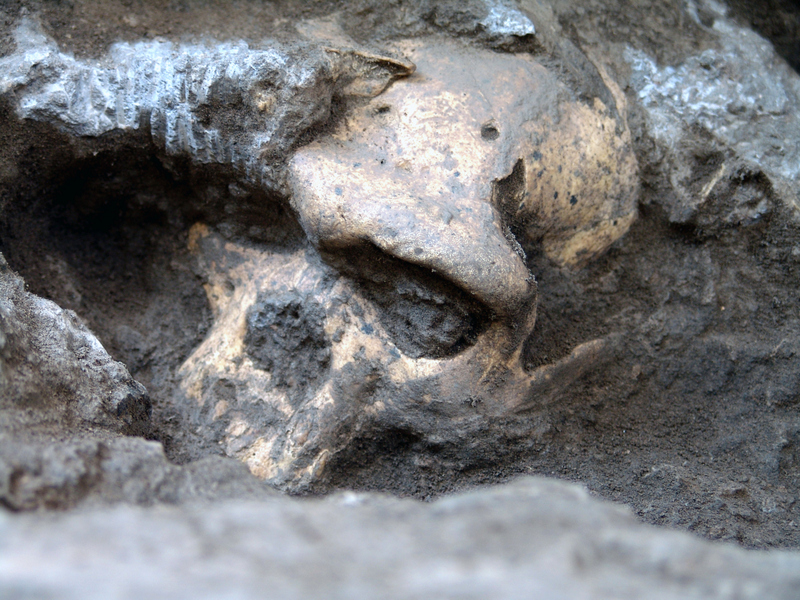 The Dmanisi early Homo cranium (D4500) in situ. Courtesy Georgian National Museum
The Dmanisi early Homo cranium (D4500) in situ. Courtesy Georgian National Museum
__________________________________
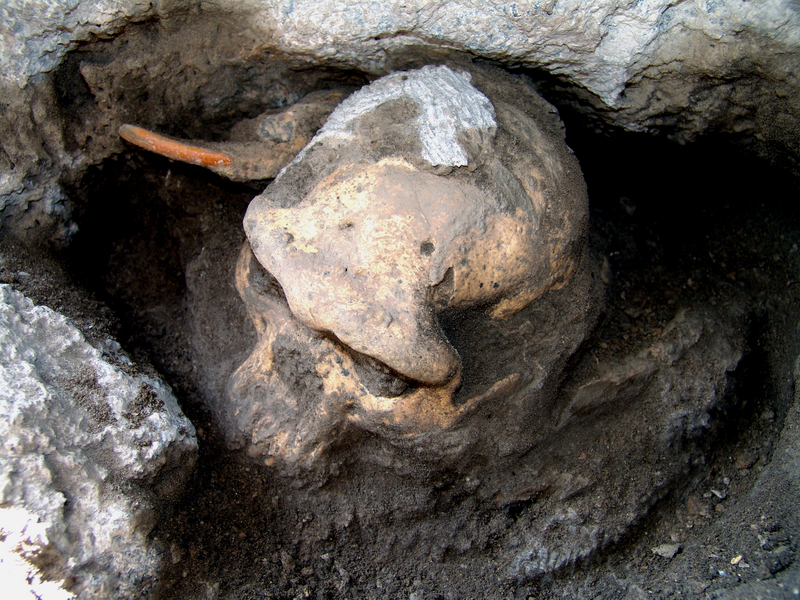 The Dmanisi D4500 early Homo cranium and a large rodent tooth in situ. Associated fauna, such as the tooth from a rodent species that lived 1.8 million years ago, helped to date the find. Courtesy Georgian National Museum
The Dmanisi D4500 early Homo cranium and a large rodent tooth in situ. Associated fauna, such as the tooth from a rodent species that lived 1.8 million years ago, helped to date the find. Courtesy Georgian National Museum
__________________________________
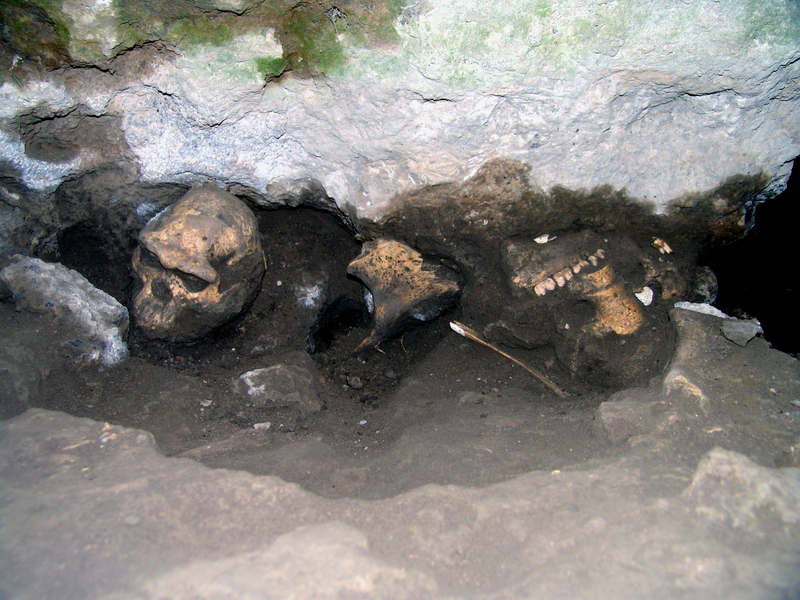 The Dmanisi D4500 early Homo cranium and ancient herbivore fossil remains in situ. Courtesy Georgian National Museum
The Dmanisi D4500 early Homo cranium and ancient herbivore fossil remains in situ. Courtesy Georgian National Museum
__________________________________________
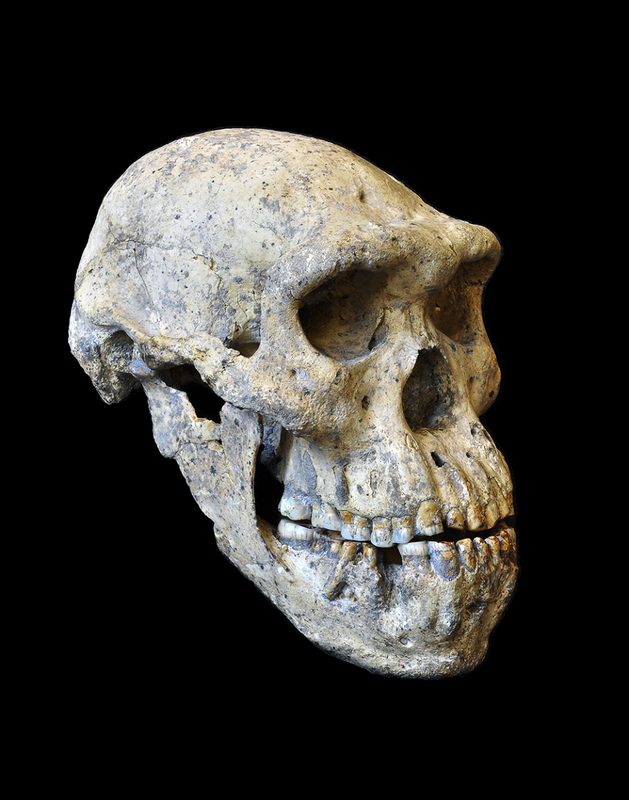 The complete Skull 5. Courtesy Guram Bumbiashvili, Georgian National Museum
The complete Skull 5. Courtesy Guram Bumbiashvili, Georgian National Museum
_________________________________
Skull 5 was another first. But the biggest revelation came not with the latest fossil, but with what the fossils collectively had to say about human evolution. Now, with fossil finds that represented five distinct individuals, it was the first time that such an assembly of Early Pleistocene Homo fossils were found together within the same time and space context. No other site, in Africa or elsewhere, could boast of such a collection. The Dmanisi discoveries meant that scientists could study a range of variation in human species within the context of one place and time range, a relative mother lode of information that could potentially clarify, and perhaps even revolutionize, how we see these earliest of Homo human ancestors.
The researchers set to work. And the result of their study was startling. Lordkipanidze and his colleagues summarize it well in the following words in a recent report published in Science:
Geometric morphometric analysis and re-sampling statistics show that craniomandibular shape variation among the Dmanisi hominids is congruent with patterns and ranges of variation in chimpanzee and bonobo demes [a population of one species](Pan troglodytes troglodytes, P. t. verus, P. t. schweinfurthii, and P. paniscus) and in a global sample of H. sapiens. Within all groups, variation in cranial shape is mainly due to interindividual differences in size and orientation of the face relative to the braincase. The Dmanisi sample, including skull 5, thus represents normal within-deme variation, ranging from small-faced relatively orthognathic (typically female and/or subadult) individuals to large-faced relatively prognathic (typically male) individuals.*
In other words, after examining the remains, the research team concluded that the differences among these fossils vary no more than the differences between five modern humans or five chimpanzees.
“Thanks to the relatively large Dmanisi sample, we see a lot of variation,” said Christoph Zollikofer from the Anthropological Institute and Museum in Zurich, Switzerland—a co-author of the Science report. “Had the braincase and the face of Skull 5 been found as separate fossils at different sites in Africa, they might have been attributed to different species.”
Historically, variations among Homo fossil finds in Africa and Asia have also been found, but these differences have normally not been found within the same spatial and time period context, and thus scientists have classified the various finds as belonging to separate species. But now, according to Lordkipanidze and his colleagues, what has previously been thought to be separate ancient human species — Homo erectus, Homo habilis, Homo rudolfensis, and Homo ergaster, for example — may actually be variations or sub-species of one and the same species.
The upshot: Researchers now need to re-adjust their thinking and proceed more cautiously when determining how early Homo fossils are classified.
____________________________________
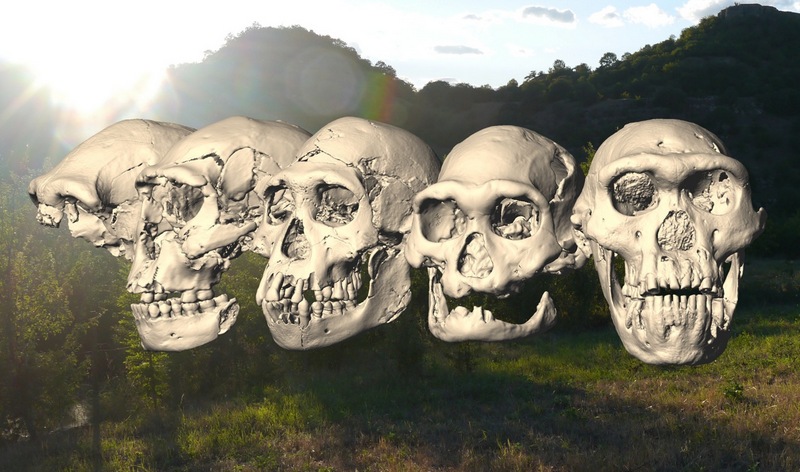 Dmanisi Skulls 1-5 (left to right), showing the individual variations, and a Dmanisi landscape. Courtesy M. Ponce de León and Ch. Zollikofer, University of Zurich, Switzerland
Dmanisi Skulls 1-5 (left to right), showing the individual variations, and a Dmanisi landscape. Courtesy M. Ponce de León and Ch. Zollikofer, University of Zurich, Switzerland
____________________________________
Redefining the Ape/Human Transition
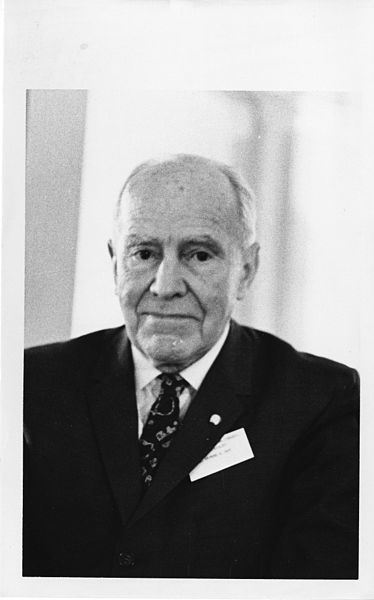
It was Raymond Dart who started it all. Back in 1925, publication of his findings in the journal Nature of the skull of a 3-year-old, now famously known as the Taung Child (named after its initial recovery from the Taung lime quarry in South Africa), led to a human fossil-hunting regime that has continued and expanded to this day. His discovery launched the worldwide effort to uncover the first ‘proto-human’ species, a genus that, for the evolutionists, stood somewhere between the apes and humans on the traditional time-line of evolutionary progression within the Primate Order. Dart assigned his find to a new genus, Australopithecus (“Southern Ape”). Discoveries by other scientists at various sites across Africa followed, leading to new species classifications—Australopithecus (Au.) afarensis, Au. anamensis, Au. bahrelghazali, Au. garhi. Scientists on the Australopithecus trail were beginning to come to some arguable consensus about what the direct ancestor to the Homo line would look like—until Malapa.
It dominated science headlines when the news was first released. The discovery of the remains of a new species of ancient hominin (human ancestor) revealed a candidate that sported a mosaic of features both ape-like and human — an unprecedented 2-million-year-old hybrid called Australopithecus sediba (Au. sediba). First stumbled upon in 2008 by Professor Lee Berger of the University of the Witwatersrand and his then 9-year-old son Matthew at the fossil bearing site of Malapa in South Africa, the finds, consisting of remarkably complete skeletal remains as well as other well-preserved fauna and flora, instantly became the subject of perhaps the most intense and thoroughly studied hominin fossils ever documented.
_____________________________________
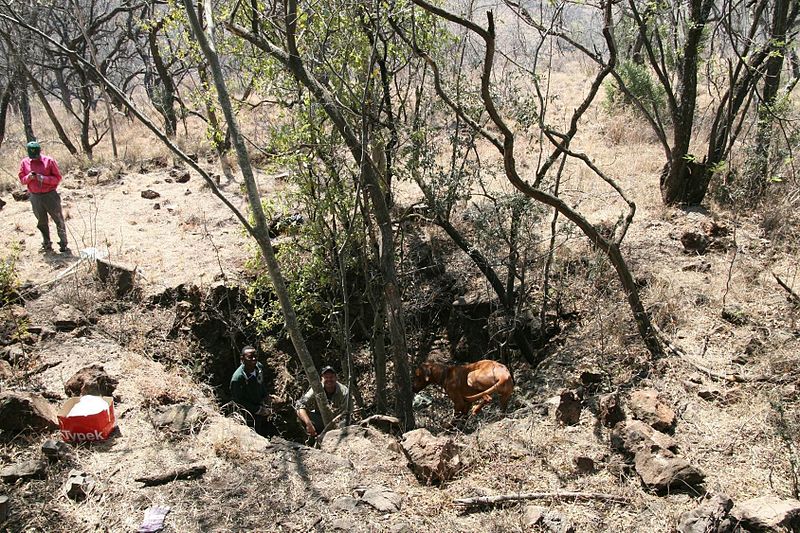 Above, the Malapa site, September 4th, 2008, at the moment of the discovery of the fossilized female skeleton MH2. Photo courtesy of Lee Berger and the University of the Witwatersrand, under Creative Commons attribution license.
Above, the Malapa site, September 4th, 2008, at the moment of the discovery of the fossilized female skeleton MH2. Photo courtesy of Lee Berger and the University of the Witwatersrand, under Creative Commons attribution license.
____________________________________
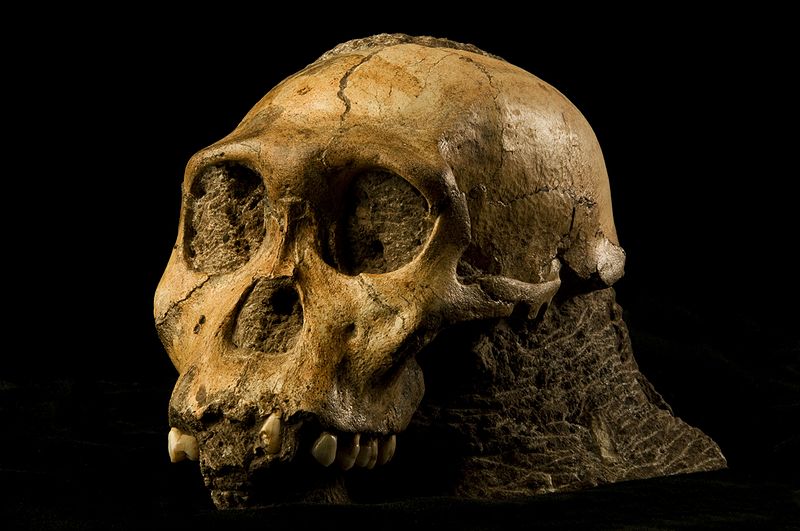 The U.W. 88-50 (MH 1) cranium. The cranium forms part of the holotype skeleton of Australopithecus sediba from the Malapa site, South Africa. This image relates to an article that appeared in the April 9, 2010, issue of Science, published by AAAS. The study, by Dr. L.R. Berger of University of the Witwatersrand in Johannesburg, South Africa, was titled, “Australopithecus sediba: A New Species of Homo-like Australopith from South Africa.” Photo by Brett Eloff courtesy of Lee Berger and the University of the Witwatersrand.
The U.W. 88-50 (MH 1) cranium. The cranium forms part of the holotype skeleton of Australopithecus sediba from the Malapa site, South Africa. This image relates to an article that appeared in the April 9, 2010, issue of Science, published by AAAS. The study, by Dr. L.R. Berger of University of the Witwatersrand in Johannesburg, South Africa, was titled, “Australopithecus sediba: A New Species of Homo-like Australopith from South Africa.” Photo by Brett Eloff courtesy of Lee Berger and the University of the Witwatersrand.
___________________________________
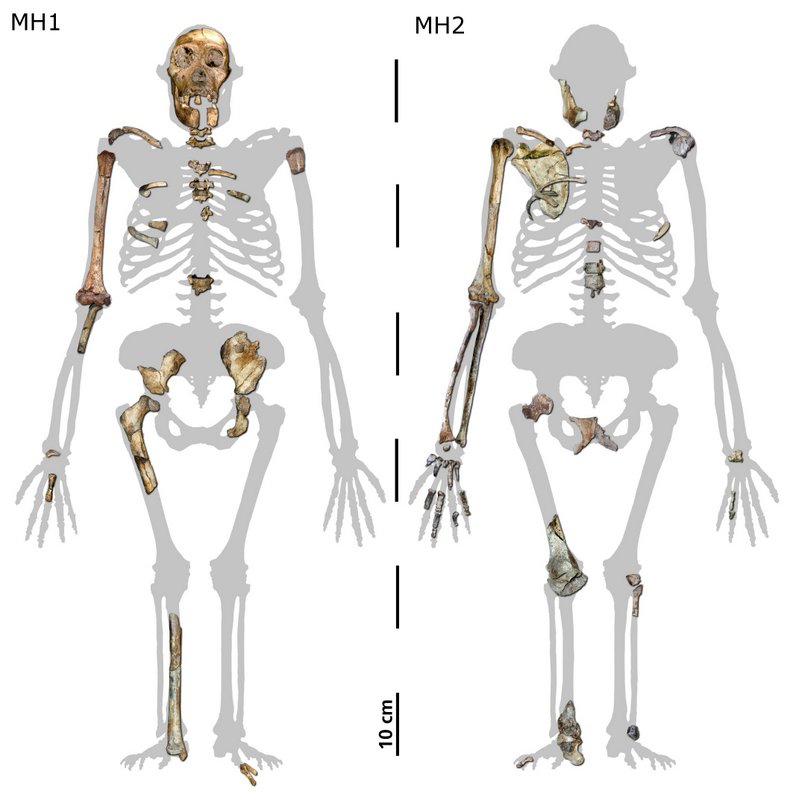
SKELETAL LAYOUT OF MH1 AND MH2, the first two skeletal specimens unearthed at Malapa by Lee Berger and his team.; Image produced by Peter Schmid taken from Berger et al 2010. Australopithecus sediba: A new species of Homo-like australopith from South Africa, Science 320:195-204.
___________________________________
The team, led by Berger and composed of South African and international scientists from the Evolutionary Studies Institute (ESI) at the University of the Witwatersrand (Wits) and 16 other global institutions (totalling more than 100 researchers from around the world), examined the anatomy of Au. sediba based on its skeletons catalogued as “MH1” (a juvenile skeleton) and “MH2” (an adult female skeleton), as well as an adult isolated tibia catalogued as “MH4”. Dispersed among separate studies, the examinations determined, more than any other Australopithecus findings to date, the essence of how this hominin looked, walked, chewed and moved, complicating and changing perspectives on the evolution of the australopith forerunner genus in human ancestry:
Au. sediba’s teeth
The first study, led by Professor Joel Irish from the Research Centre for Evolutionary Anthropology and Palaeoecology at Liverpool John Moores University in the United Kingdom, examined dental traits in the fossils.
In this study, Irish, Debbie Guatelli-Steinberg of the Ohio State University and their colleagues examined the teeth from sediba and compared them to eight other African hominin species, which include modern humans from Africa, and extinct species of Homo, Australopithecus, and Paranthropus. In all, the researchers examined more than 340 fossils and 4,571 recent specimens. They also examined teeth from 44 gorillas for comparison.
Based on the examination, Irish and his colleagues suggested that the species is distinct from east African australopiths, but is close to Au. africanus, thus forming a southern African australopith “clade” (a group consisting of an ancestor and all its descendants).
The latter, in turn, shares a number of derived states or physical characteristics with a clade comprising four fossil samples of the genus Homo. This surprising result has significant implications for our present understanding of hominin phylogeny (the evolution of the species), and alludes to the possibility that Au. sediba, and perhaps Au. africanus are not descendant from the Au. afarensis lineage, represented most prominently by the famous “Lucy” skeleton discovered by Donald Johanson in Ethiopia in 1974, as had been widely hypothesized.
“Our research on teeth can’t definitively settle if either sediba or africanus is more closely related to humans than the other species,” Guatelli-Steinberg said. “But our findings do suggest that both are closely related to each other and are more closely related to humans than afarensis.”
Irish noted that even though the results of this study were surprising and were bound to be viewed as controversial given the long held hypotheses relating to the origins of the genus Homo, the genus more directly ancestral to humans, he would have come to the same conclusion. “The extreme age and rarity of these fossils naturally draws enhanced interest in and scrutiny of any new findings”, he said. “Based on the evidence, I would have come up with the same conclusions whether the samples were three million or 30 years old.”
But the surprises were not over regarding the teeth. A later laser scanning study on the teeth by researchers at the Max Planck Institute of Evolutionary Anthropology in Leipzig, Germany and the University of *Colorado Boulder showed that sediba had a diet unlike other known early human ancestors. That study indicated that sediba ate harder foods than other early hominids, focusing on trees, bushes and fruits, in contrast to most other ancient human ancestors fossils examined from Africa, including Paranthropus boisei, also known as “Nutcracker Man” because of its massive jaws and teeth, which targeted grasses and sedges.
___________________________________
 Au. sediba skull showing teeth. Courtesy Paul Sandberg, University of Colorado
Au. sediba skull showing teeth. Courtesy Paul Sandberg, University of Colorado
________________________________
Sediba’s jaw
Professor Darryl de Ruiter of Texas A&M and the Evolutionary Studies Institute at the University of the Witwatersrand, and his colleagues, examined the mandibular (lower jaw) material from the Sediba MH2 individual.
The study concluded that the mandibular remains share similarities with other australopiths, but differ from Au. africanus in both size and shape, as well as in their growth trajectory.
“These results add further support to the claim that Au. sediba is taxonomically distinct from the temporally – and geographically – close species Au. africanus. Where the Au. sediba mandibles differ from those of Au. africanus, they appear most similar to representatives of early Homo,” says De Ruiter.
____________________________________
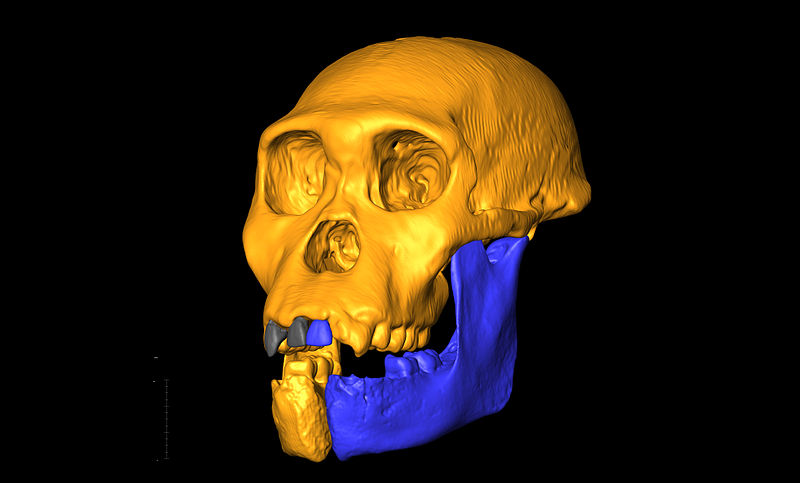 Reconstruction of the MH1 skull, highlighting lower jaw and teeth. Reconstruction by Kristian Carlson, courtsey of Lee R. Berger and the University of the Witwatersrand.
Reconstruction of the MH1 skull, highlighting lower jaw and teeth. Reconstruction by Kristian Carlson, courtsey of Lee R. Berger and the University of the Witwatersrand.
______________________________________
Sediba’s upper limbs
Professor Steven Churchill of Duke University and the Evolutionary Studies Institute at University of the Witwatersrand examined the upper limb elements of Au. sediba. They noted that with the exception of the hand skeleton (which exhibited a suite of features that may signal enhanced manipulative capabilities compared to earlier australopiths), the upper limbs of Sediba were largely primitive in their morphology (physical characteristics). Au. sediba thus shared with other australopiths an upper limb that was well-suited for arboreal or other forms of climbing and possibly suspension, and perhaps even more than had been previously suggested for any other member of the australopith genus.
Churchill adds that “it is possible that the climbing features in the skeleton of Australopithecus sediba and other australopiths are functionally unimportant primitive traits retained from a more arboreal ancestor. Even so, it is curious that these features persist unchanged for several million years, only to abruptly disappear with the emergence of the genus Homo.”
That question perhaps awaits answers through future finds and research.
Sediba’s rib cage
Dr. Peter Schmid and colleagues at the Evolutionary Studies Institute at the University of the Witwatersrand and the University of Zurich studied the remains of Sediba’s thorax, or rib cage. Their findings revealed a narrow upper thorax, much like that of the large-bodied apes, and unlike the broad, cylindrical chest characteristic of humans. In conjunction with the largely complete remains of the shoulder girdle, Schmid notes that “the morphological picture that emerges is one of a conical thorax with a high shoulder joint that produces in Au. sediba an ape-like “shrugged” shoulder appearance, and thus a configuration that is perhaps uniquely australopith, and that would not have been conducive to human-like swinging of the arms during bipedal striding and running”.
Their research, however, showed that the less well-preserved elements of the lower rib cage suggested some degree of human-like narrowing to the lower thorax, a surprising feature that is not like that of Homo erectus or modern humans.
The vertebral column
Dr. Scott Williams of the Center for the Study of Human Origins at New York University and colleagues examined the vertebral column of Au. sediba. They described a remarkably articulated lumbar vertebral region that showed a human-like curvature of the lower back. Williams noted that “the adult female is the first early hominin skeleton that preserves an intact terminal thoracic region and this provides critical information on the transition in inter-vertebral joints, and, by inference, mobility of the lower back”.
The study also demonstrated that Au. sediba had the same number of lumbar vertebrae as modern humans, but possessed a functionally longer and more flexible lower back. In addition, the morphology of Sediba’s lumbar curvature suggested that Au. sediba was more similar to the Nariokotome Homo erectus (the famous “Turkana Boy“ discovered by Kamoya Kimeu and Richard Leakey) skeleton than to the australopiths.
Sediba’s gait
Dr. Jeremy DeSilva and colleagues at Boston University and the Evolutionary Studies Institute at the University of the Witwatersrand examined the lower limb anatomy of Au. sediba.
“The female Australopithecus sediba preserves a heel, ankle, knee, hip and lower back—all of the ingredients necessary to reconstruct how she walked with remarkable precision. Even the famous Lucy skeleton only preserves two of these five (ankle and hip)”, said DeSilva.
The combination of, and the individual anatomies of, the heel, mid-foot, knee, hip, and back are unique and curious, said the team. This defined an australopith that walked with a ‘hyper-pronating gait’ (compared to the modern human gait, feet that pronated or rotated differently during the gait cycle).
“The implications of this study are that multiple forms of bi-pedalism were once practiced by our early hominin ancestors,” added Berger about the DeSilva conclusions.
Sediba’s brain
The exceptionally well-preserved cranium of the MH-1 juvenile was scanned at the European Synchrotron Radiation Facility, the most powerful facility in the world for scanning fossils, under the direction of Dr. Kristian Carlson from the University of the Witwatersrand. By doing this, he and his colleagues were able to develop a precise map or image of the impressions on the interior surface of the cranium, or brain case, producing an endocast (or 3-dimensional image) of the area where the brain, long decayed into nothing, would have been.
Said Carlson, “the actual brain residing within a cranium does not fossilize. Rather, by studying the impressions on the inside of a cranium, palaeontologists have an opportunity to estimate what the surface of a brain may have looked like. By quantifying how much volume is contained within a cranium, palaeontologists can estimate the size of a brain.”
The results revealed that the brain was human-like in shape, yet much smaller than brain volumes recorded in Homo species. In fact, the size was not significantly more than that of a modern chimpanzee. However, the orbito-frontal region of the brain, which is behind the eyes, showed characteristics of neural (nerve cell structure) reorganization. The researchers suggested that this indicated a “re-wiring” of the frontal lobe’s neural constitution to a pattern more human-like. This questioned the generally-accepted theory of brain enlargement during the transition from Australopithecus to Homo as the most essential consideration and supported the alternate theory that a neural reorganization in the orbitofrontal region made it possible for A. sediba to be more “human-like” with the smaller cranium. Thus, size may not matter more than brain tissue structure and organization.
_______________________________________
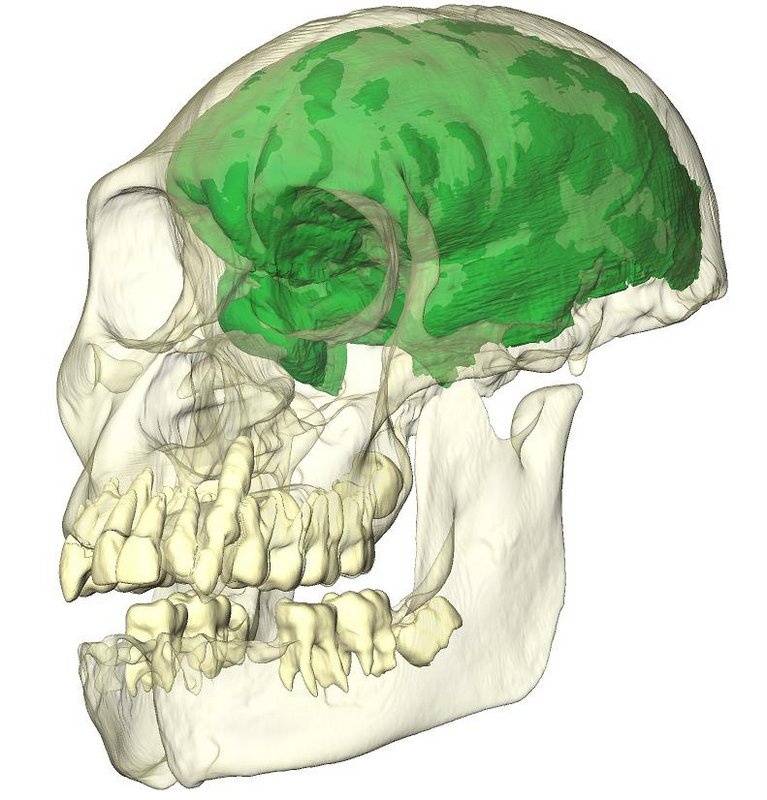 Image shows a reconstruction of the skull of MH1 (partially transparent) with the brain endocast depicted in green. Dentition also visible and the specimen is viewed from slightly above and anterolateral. Courtesy University of Witwatersrand and Kristian Carlson
Image shows a reconstruction of the skull of MH1 (partially transparent) with the brain endocast depicted in green. Dentition also visible and the specimen is viewed from slightly above and anterolateral. Courtesy University of Witwatersrand and Kristian Carlson
________________________________________
Sediba’s hands for toolmaking
Tracy Kivell of the Max Planck Institute for Evolutionary Anthropology in Leipzig, Germany, and a team of colleagues studied the hand fossils of MH-2, the adult female Au. sediba. They determined that the hand exhibited a strong flexor capability, good for tree-climbing. However, the hand also featured a long thumb and short fingers, a clear requirement for precision gripping, or gripping that involves the more refined use of the thumb and fingers and not the palm. This suggested that Au. sediba had the mechanical capability to make tools.
According to Kivell:
“The hand is one of the very special features of the human lineage, as it’s very different from the hand of the apes. Apes have long fingers for grasping branches or for use in locomotion, and thus relatively short thumbs that make it very difficult for them to grasp like a human.
Au. sediba has, in contrast, a more human-like hand that has shortened fingers and a very long thumb. Although at the same time, it appears to have possessed very powerful muscles for grasping. Our team interpreted this as a hand capable of tool manufacture and use, but still in use for climbing and certainly capable of human-like precision grip.”
These findings pair Au. sediba with Homo habilis, the famous “handy man” Australopithecine discovered by Louis and Mary Leakey in the 1960’s, as a hominin or early human candidate capable of making tools. It also suggests that there were more than one ancient hominin species that may have produced tools, either during different time periods, overlapping time periods, or concurrently in time.
To date, no stone tools have been found in association with the Malapa cave fossils. But excavations will continue, and it is anticipated that much more data will be forthcoming.
______________________________________
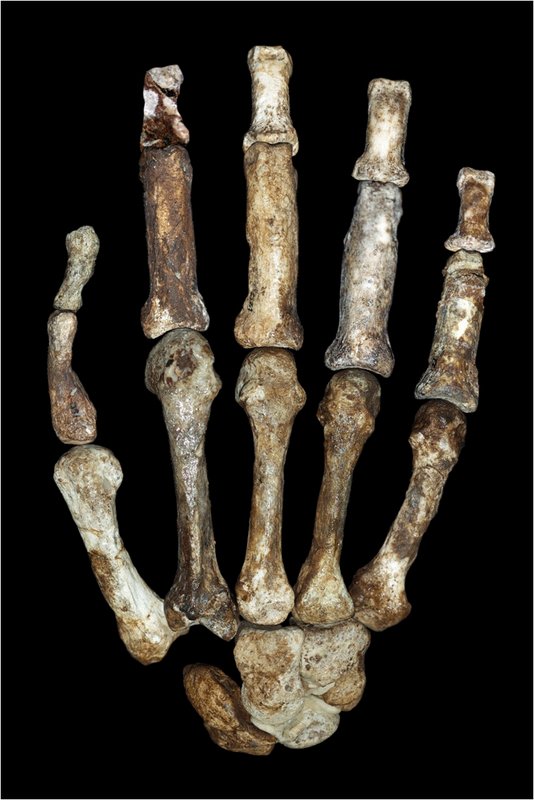 All of the right hand bones of Au. sediba rearticulated. Courtesy Peter Schmid
All of the right hand bones of Au. sediba rearticulated. Courtesy Peter Schmid
________________________________________________
Sediba’s pelvis
Dr. Job Kibii of the University of the Witwatersrand and associates examined the partial pelvis of MH-2 and found that it also exhibited features that combined primitive elements more akin to that of earlier hominins and apes along with elements more characteristic of humans. They observed that the size of the joint that connects the sacrum with the vertebral column and the length of the front portion of the pelvis is like that of earlier hominins and apes, but the overall shape of the pelvis is short and broad, creating a bowl shape like that of humans, with an s-shape along the top of the blades, another human characteristic. Indeed, simply placing the reconstructed pelvis next to that of an ape and an earlier hominin is very telling. The pelvis clearly appears more human-like than ape-like.
Said Kibii, “It is surprising to discover such an advanced pelvis in such a small-brained creature because of previous ideas as to the origin of the shape of the human pelvis.”
The generally-accepted theory is that broader pelvises evolved, at least in part, in response to the enlarging brains of hominins, on the assumption that the more human-like pelvis shape more easily accommodated the larger-brained hominin infants in childbirth. The new findings turn this on its head, suggesting that there was another, perhaps more important evolutionary reason why the pelvis changed:
The change in the pelvic morphology accommodates a more bipedal, or erect, gait – a salient hallmark of being human. Says Steven Churchill of Duke University, one of the co-authors of the paper detailing the pelvis study, “What’s cool about sediba is their pelvises are already different from other australopiths, and yet they’re still small-brained… It’s hard to imagine that there’s no change in locomotion behind all this.”
_______________________________________
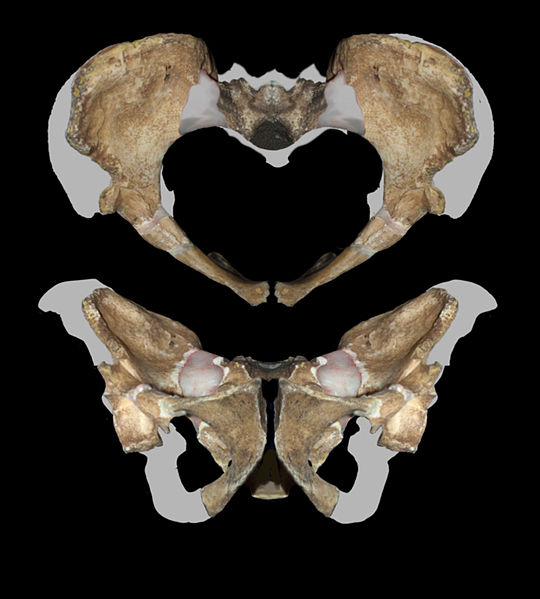 The reconstructed pelvis of MH2. Left side is a mirror image. Image created by Peter Schmid, courtesy Lee R. Berger and the University of the Witwatersrand
The reconstructed pelvis of MH2. Left side is a mirror image. Image created by Peter Schmid, courtesy Lee R. Berger and the University of the Witwatersrand
___________________________________________
Sediba’s feet and ankles
Dr. Bernhard Zipfel of the University of the Witwatersrand and colleagues examined the feet and ankle fossils of MH-1 and MH-2, finding them to consist of a mix of both primitive and modern characteristics unique to Au. sediba as a species. As the ankle fossils represented a very rare and opportune find in that they constituted one of the most complete hominin ankles ever found, and in an articulated position or association, it was feasible to perform a study and reach reasonably sound conclusions about the characteristics of the fossils and their implications. The ankle joint and foot bones were constructed much like a human’s, with some evidence for a human-like arch and a well-defined Achilles tendon. It was also clear that the distal tibia or leg bone had to contact the anklebone perpendicular to the vertical shaft of the leg bone. These are all requirements for habitual bipedal locomotion, or upright walking.
However, the heel and shin bone exhibited more ape-like qualities, suggesting that Au. sediba was also a tree-climber, much like its ape cousins.
Their overall analysis suggested that Au. sediba likely practiced a unique form of upright walking, not quite like that of humans, along with some degree of tree climbing.
_______________________________________
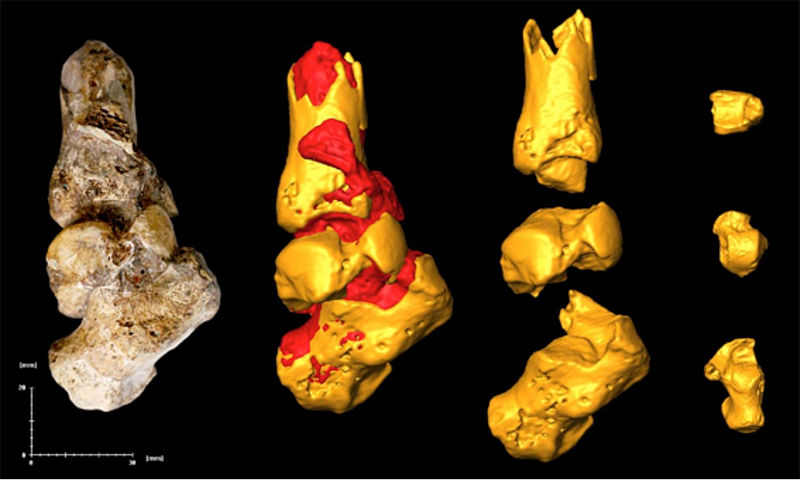 Ankle of Australopithecus sediba. Red is adhering matrix. Image created by Kristian Carlson, courtesy of Lee R. Berger and the University of the Witwatersrand.
Ankle of Australopithecus sediba. Red is adhering matrix. Image created by Kristian Carlson, courtesy of Lee R. Berger and the University of the Witwatersrand.
_________________________________________________
The investigations at the Malapa site have seen the discovery of more than 300 early human ancestor remains, including parts of skeletons still encased in rock. Though there may be much more to come out of Malapa, the finds and their interpretation will likely have a salient impact on how human evolution, particularly at the transition from “ape-man” to Homo, or early human, actually unfolded.
“What these papers suggest is that sediba probably doesn’t come from the east African species that Lucy comes from, Australopithecus afarensis, and it may be considered the best candidate as an ancestor for the genus Homo“, said Malapa project leader Berger……”Such clear insight into the anatomy of an early hominin species will clearly have implications for interpreting the evolutionary processes that affected the mode and tempo of hominin evolution and the interpretation of the anatomy of less well preserved species.”
__________________________________
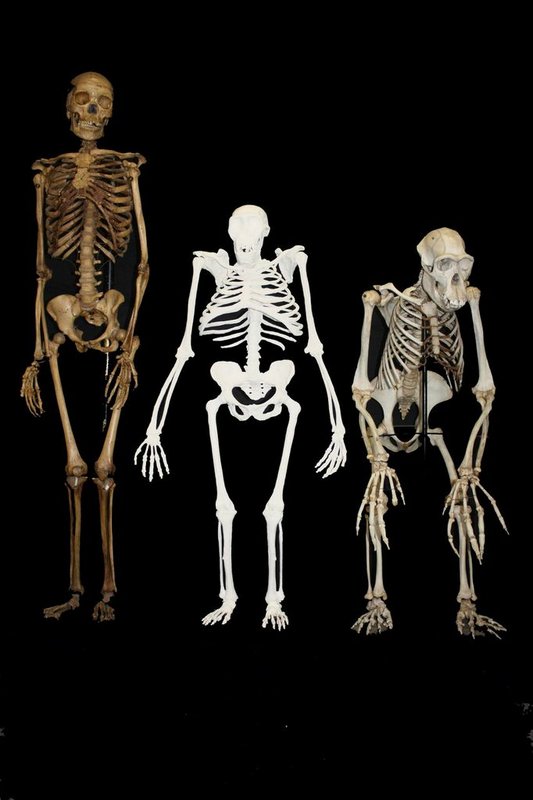 Composite reconstruction of Au. sediba based on recovered material from MH1, MH2 and MH4 and based upon the research presented above. As all individuals recovered to date are approximately the same size, size correction was not necessary. For comparison, small-bodied female modern H. sapiens on left, Male Pan troglodytes on right. Photo by Lee Berger, courtesy of the University of the Witwatersrand
Composite reconstruction of Au. sediba based on recovered material from MH1, MH2 and MH4 and based upon the research presented above. As all individuals recovered to date are approximately the same size, size correction was not necessary. For comparison, small-bodied female modern H. sapiens on left, Male Pan troglodytes on right. Photo by Lee Berger, courtesy of the University of the Witwatersrand
__________________________________
The New Synthesis
Educated at Harvard University, paleoanthropologist Rick Potts has spent much of his career as an academic and administrator, having taught at Yale University and curated archaeological/anthropological materials at Yale’s Peabody Museum. He now serves as the director of the Smithsonian’s Human Origins Program and curator of anthropology at the National Museum of Natural History.
But this is only part of his world. When he’s not attending to his program and curatorial duties, one would find him in the field, along with teams of other scientists, at locations in the East African Rift Valley or in southern and northern China. These are places where new evidence is now transforming an old paradigm of human evolution in a big way.
In a recent study published in the journal Science, he and co-author colleagues Susan Antón, professor of anthropology at New York University, and Leslie Aiello, president of the Wenner-Gren Foundation for Anthropological Research, report results from comprehensive research on shifting paleoclimates, ancient stone tools, isotopes found in teeth, and cut marks found on animal bones in East Africa. The findings support an emerging new consensus that suggests a rethinking of long-held assumptions about human origins and evolution.
It begins with questions surrounding early hominin diversity.
“Soon after our genus (Homo) first evolved by about 2.4-2.3 million years ago there were at least three different species of Homo walking the earth: Homo habilis, Homo rudolfensis, and slightly later Homo erectus,” explains Briana Pobiner in an article published by the National Museum of Natural History. Pobiner is a Smithsonian paleoanthropologist and researcher who works closely with Potts. “In fact, these species overlapped in time with each other and even with Australopithecus and Paranthropus, two other genera of early humans. Some of their fossils have even been found at the same prehistoric sites. Anatomical traits and behaviors were mixed and matched, with some more human-like features found in some species, and others in different species, which according to the authors indicates that each species utilized a different strategy to survive.”**
In other words, the traits that made us human evolved at different times and in different places. From the beginning, if a clear beginning could be simply defined at all, there was no single evolving package and line of evolution.
And climate variability was a key driver, maintains Potts. “Unstable climate conditions favored the evolution of the roots of human flexibility in our ancestors. The narrative of human evolution that arises from our analyses stresses the importance of adaptability to changing environments, rather than adaptation to any one environment, in the early success of the genus Homo.”***
It was therefore adaptability to change, not the long-held notion of specialization, that was the ultimate key to human evolution, say the researchers. Potts has called this the variability selection hypothesis, an idea he has actually been advancing for years. It challenges the long-held “savanna hypothesis”, which has suggested that our genus, Homo, emerged and evolved at least in part due to adaptations (such as walking upright, dietary change, a larger brain and body, and making tools) as a result of a major, gradual climate change from a warmer, wetter forest environment on the African continent to a cooler, drier one that resulted in the spread of a savanna grassland.
It has helped to define a new synthesis, at least according to these scientists, that explains a major engine of human evolution, one that ultimately revolves around the ability of our species to adapt, innovate, and even modify the world around us. And this, most scientists of human evolution can agree, is what Homo sapiens have done best, and why they are the lone survivor among an originally diverse line of hominins.
____________________________________
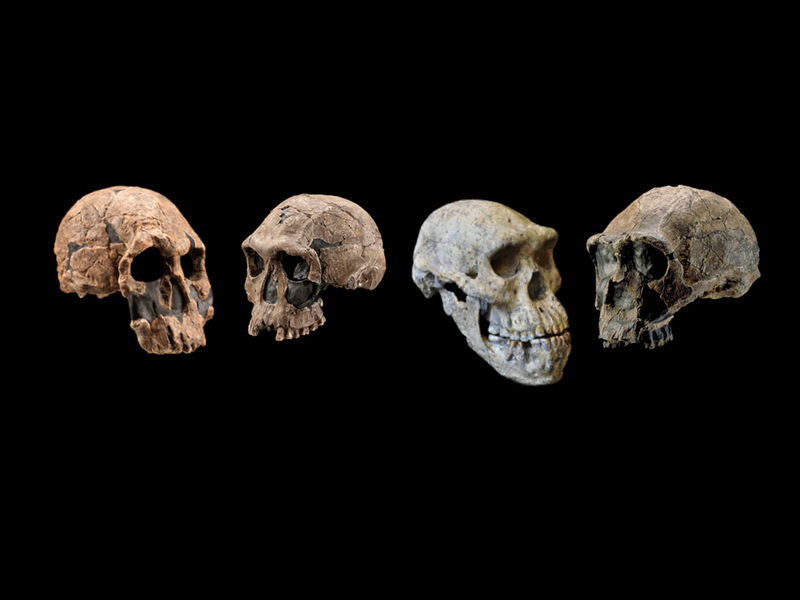 Between 2.1 and 1.8 million years ago, Homo, exhibited diverse traits. These genus included the Kenyan fossils KNM-ER 1470 (left) and KNM-ER 1813 (second from left). By 1.8 to 1.9 million years ago, Homo erectus evolved in Africa and spread to Eurasia. Early populations of this species are represented by the Kenyan fossil KNM- ER 3733 (right) and the Georgian fossil Dmanisi Skull 5 (second from right). The three lineages — the 1470 group, the 1813 group, and Homo erectus — overlapped in time for several hundred thousand years. From press release of the Smithsonian Institution, Smithsonian scientist and collaborators revise timeline of human origins, 3 July 2014 Credits: Kenyan fossil casts – Chip Clark, Smithsonian Human Origins Program; Dmanisi Skull 5 – Guram Bumbiashvili, Georgian National Museum
Between 2.1 and 1.8 million years ago, Homo, exhibited diverse traits. These genus included the Kenyan fossils KNM-ER 1470 (left) and KNM-ER 1813 (second from left). By 1.8 to 1.9 million years ago, Homo erectus evolved in Africa and spread to Eurasia. Early populations of this species are represented by the Kenyan fossil KNM- ER 3733 (right) and the Georgian fossil Dmanisi Skull 5 (second from right). The three lineages — the 1470 group, the 1813 group, and Homo erectus — overlapped in time for several hundred thousand years. From press release of the Smithsonian Institution, Smithsonian scientist and collaborators revise timeline of human origins, 3 July 2014 Credits: Kenyan fossil casts – Chip Clark, Smithsonian Human Origins Program; Dmanisi Skull 5 – Guram Bumbiashvili, Georgian National Museum
________________________________________________
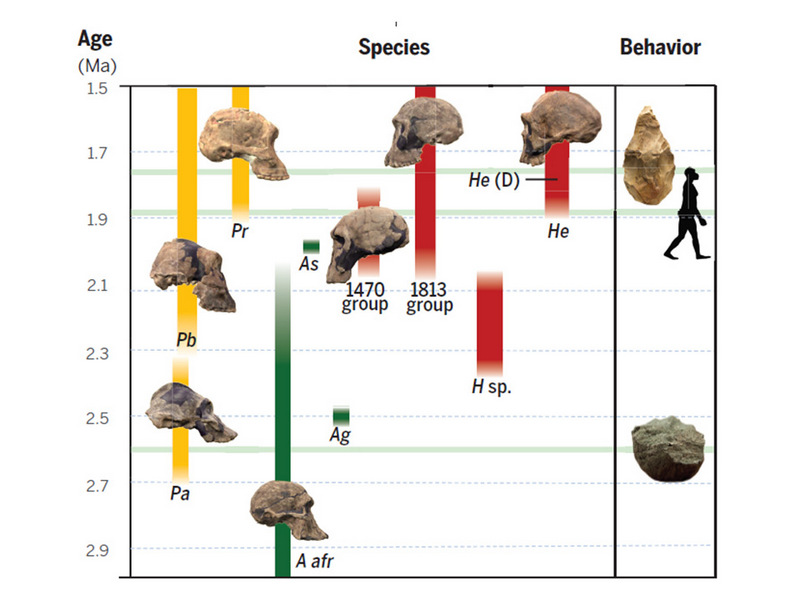 Hominin evolution from 3.0 to 1.5 Ma. Green: Australopithecus, Yellow: Paranthropus, Red: Homo. The icons indicate from the bottom the first appearance of stone tools at ~2.6 Ma, the dispersal of Homo to Eurasia at ~1.85 Ma, and the appearance of the Acheulean technology at ~1.76 Ma. The number of contemporaneous hominin taxa during this period reflects different strategies of adaptation to habitat variability. The cultural milestones do not correlate with the known first appearances of any of the currently recognized Homo taxa. Text and Image courtesy of Antón et al., Science/AAAS 2014 and related press release.
Hominin evolution from 3.0 to 1.5 Ma. Green: Australopithecus, Yellow: Paranthropus, Red: Homo. The icons indicate from the bottom the first appearance of stone tools at ~2.6 Ma, the dispersal of Homo to Eurasia at ~1.85 Ma, and the appearance of the Acheulean technology at ~1.76 Ma. The number of contemporaneous hominin taxa during this period reflects different strategies of adaptation to habitat variability. The cultural milestones do not correlate with the known first appearances of any of the currently recognized Homo taxa. Text and Image courtesy of Antón et al., Science/AAAS 2014 and related press release.
____________________________________
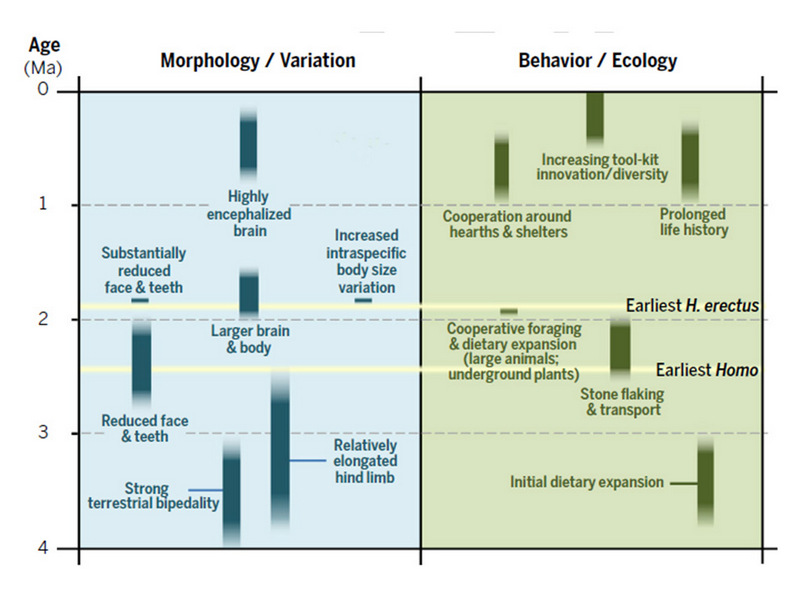 Evolutionary timeline of important anatomical, behavioral and life history characteristics that
Evolutionary timeline of important anatomical, behavioral and life history characteristics that
were once thought to be associated with the origin of the genus Homo or earliest H. erectus. Image courtesy of Antón et al., Science/AAAS 2014
__________________________________
Going forward, Potts and his colleagues know that nothing stays the same when it comes to building theories and models—with each new discovery, a new twist can be introduced, or an entire theory can be called into question. But in science, everything is open to question. It is the “nature of the beast”, so to speak.
In any case, what they are finding may have implications for the present and the future of human survival. Global warming comes to mind, here. Potts and his colleagues at the Smithsonian’s Human Origins Program have eloquently summarized the challenge well:
The question ahead is how well our sources of resilience as a species will succeed as our alterations of the landscape, atmosphere, and water interact with the tendency of Earth’s environment to shift all on its own. This is an ‘experiment’ just now unfolding, one that has never occurred before. The intensity of environmental change seems likely to create entirely new survival challenges for the lone hominin species on the planet, and many other organisms as well.****
__________________________________________________
* David Lordkipanidze, et al., A Complete Skull from Dmanisi, Georgia, and the Evolutionary Biology of Early Homo, Science 342:326-331, 2013.
** Pobiner, Briana, The traits that make us human evolved at different times, Unearthed, National Museum of Natural History, Smithsonian Institution (website page)
*** From a press release of the Smithsonian Institution, Smithsonian scientist and collaborators revise timeline of human origins, 3 July 2014
****From Climate Effects on Human Evolution, the Smithsonian Human Origins Program website: What does it mean to be human?
